

Korean War: 4 SEQ Samples
The topic of the Korean War revolves around the reasons why it happened and whether it was a proxy war or just a civil war. These are just samples for students to refer to so that they have a model to use when answering a similar question.
For ease of download, I have included the pdf download in the box below.
Download Here!
1. Explain how post-war developments in Asia and Europe impacted Korea.
( P ) Post-WWII development in Asia impacted Korea as it led to the necessity to contain the spread of communism in the Asia-Pacific.
( E ) In October 1949, China turned communist, and China signed the Sino-Soviet Treaty of Friendship, Alliance and Mutual Assistance in February 1950 with the Soviet Union. The communists viewed Korea as a potential platform to expand their global influence into the Asia-Pacific. Hence, Mao, the leader of communist China, focused his attention on the assistance of North Korea, which served as a counter-balance to the American influence in Japan. As a result, the National Security Council prepared a top-secret report called the NSC-68, stressing the importance of the Americans to contain the spread of communism on a global basis.
( E ) Thus, the communist take-over in China meant that Korea had become an essential platform over which both ideologies wanted to gain control to prevent the spread of communism.
( L ) Thus, post-war development made Korea a battleground in the Cold War.
( P ) Post-war development in Europe also significantly impacted Korea as the Soviets had gained greater leverage against Western powers.
( E ) In August 1949, the Soviet Union had successfully exploded its first atomic bomb. This event created atomic parity with the USA, meaning that the USA could not use atomic diplomacy as an effective threat against the Soviet Union.
( E ) Therefore, by early 1950, the Soviet Union was more inclined to support a possible North Korean invasion of the South. Kim Il-Sung approached Stalin for help in April 1950. Kim persuaded Stalin that he could easily and swiftly conquer the South. Stalin was concerned about the alliance of America and Japan and saw this as an opportunity to counter American influence in the region.
( L ) Thus, encouraged by their attainment of atomic parity, Stalin granted Kim permission to attack the South.
2. “The Americans were responsible for the escalation of the Korean War.” How far do you agree with this statement? Explain your answer.
( P ) The escalation of the Korean War was a result of American involvement.
( E ) The American intervention triggered China’s entry into the Korean War. By Oct 1950, UN troops had captured Pyongyang, occupied two-thirds of North Korea and reached the Yalu River. The presence of the UN troops was alarming to the Chinese, who felt threatened. Hence, when they ignored the repeated Chinese warnings, China joined the North Korean troops fighting the war.
( E ) Instead of being a civil war between North and South Koreas, it escalated into a more significant regional conflict – involving the USA and its allies on one side and North Korea and China and the USSR.
( L ) Therefore, US involvement had worsened the conflict.
( P ) However, the Americans were not to be blamed for the escalation of the Korean War.
( E ) This escalation was caused by both the Soviet Union and China. The Soviet Union and China supported Kim Il Sung’s government in North Korea. They sought to extend the communist sphere of influence. The Soviet Union also supplied the North with the weaponry that would help it to invade the South. Even though Stalin did not actively encourage Kim to invade the South, he eventually approved and asked China to help Kim. Kim Il Sung also did not take any direct action against South Korea until he had attained Stalin’s approval and support.
( E ) Therefore, the indirect involvement of the Soviet Union gave Kim the confidence to carry out the invasion, which led to the Korean War and escalated into a proxy war that saw Chinese troops and Soviet-trained troops in the war.
( L ) Thus, the Soviet Union and China were responsible for the Korean War.
( J ) In conclusion, the USA had its motivations for becoming involved in Korea as part of the Cold War against the Soviet Union. Hence, the USA is responsible for escalating the Korean War. The USA saw the North Korean invasion of South Korea as part of a Soviet plan to gain hegemony in Asia and eventually control the world. As a result, they led to a significant force to counter the North Korean advance, which also led to the involvement of Chinese troops and thus escalating the Korean War.

3. “South Korea was to be blamed for the Korean War.” How far do you agree with this statement? Explain your answer.
( P ) I agree that South Korea was to be blamed for the Korean War.
( E ) Border clashes between North Korea and South Korea were standard in 1949 and 1950. South Korea started these clashes to try to capture territory in North Korea. However, Syngman Rhee’s aggressive actions in planning border clashes backfired as they failed to achieve their goals. These failed invasions set the stage for North Korea’s invasion of the South in June 1950, which started the Korean War as they convinced North Korea of the ineffectiveness of the South Korean forces.
( E ) For example, South Korean warships on North Korean military installations provoked the North Korean army and resulted in fierce fighting by both sides. It also affected the USA’s goodwill towards South Korea and made the USA even more reluctant to send heavy weapons to South Korea. As a result, these border clashes revealed the weaknesses of the South Korean forces and their inability to launch successful offensive attacks. Desertions by South Korean soldiers were common and showed the unpopularity of Rhee’s regime.
( L ) Hence, South Korea was to be blamed for the Korean War.
( P ) However, I’m afraid I disagree with the statement because the Soviet Union was also blamed for the Korean War.
( E ) The Soviet Union supported North Korea’s invasion of South Korea. In early 1950, Stalin changed his mind and became more willing to help Kim’s invasion after developments like the communist victory in China, the Soviet explosion of the atomic bomb and the US Defensive Perimeter. Hence, the Soviet Union trained the North Korean army and provided military equipment such as tanks, guns and fighter planes. As a result, Soviet support for Kim’s invasion of South Korea led to the outbreak of the Korean War.
( E ) It helped make the North Korean army strong and gave them the military capability to launch an offensive attack on South Korea. It also gave Kim the confidence to invade South Korea because he could count on Stalin and Mao to help him should the invasion go wrong. Indeed, the North Korean forces launched a surprise attack on South Korea on 25 June 1950 and started the Korean War.
( L ) Hence, USSR was to be blamed for the Korean War.
( J ) In conclusion, I partly disagree that South Korea was responsible for the Korean War. South Korea incited frequent border clashes, which increased tensions between the two sides and made the conflict inevitable. Within this setting of increasing provocation by the South, the Soviet Union could offer its support to North Korea to mount the offensive and invade South Korea, which then triggered the outbreak of the Korean War.
At the same time, Soviet Union’s financial, military, technical and logistical support for North Korea did help to make the North Korean army strong. It gave them the military capability and the confidence to launch a successful offensive attack and invasion of South Korea. Hence, both sides are responsible for the Korean War
4. “The Korean War was mainly about the reunification of the two Koreas.” How far do you agree with this statement? Explain your answer.
( P ) The Korean War was mainly because of the desire by both sides for unification.
( E ) The Korean peninsula was halved at the 38th parallel after Japan had surrendered and Japanese soldiers left Korea. The USSR occupied the northern part temporarily and the USA the southern region. The United Nations called for an election in 1947 to establish a single government to reunite Korea, but the USSR refused to hold it. As a result, Korea splintered into two halves in 1949. Both Syngman Rhee (President of South Korea) and Kim Il Sung (President of North Korea) claimed the right to rule over Korea. As a result, there were border raids and conflicts between small groups of soldiers from the North and South.
( E ) Syngman kept provoking the North Koreans by launching raids into North Kore but failed. On the other hand, Kim was also determined to unite the Korean peninsula under communism. With the blessings of the USSR, the North Korean army invaded South Korea.
( L ) Thus, a civil war broke out with Koreans fighting against each other because both sides desired unification.
( P ) However, the Korean War was primarily due to interference by external powers.
( E ) The USSR was to be blamed for the Korean War. From the start, Stalin had backed Kim Il-Sung to run a communist government in Korea due to Stalin’s attempt to keep North Korea communist and spread communism across Asia. The USSR supplied North Korea with military equipment and training. As the leader of the communist bloc, it also encouraged China to back North Korea directly, which led to Kim daring to invade South Korea in 1950.
( E ) The USSR was thus to blame because it used Korea as the ground for a proxy war to demonstrate its superiority over its superpower rival – the United States.
( L ) Thus, the Korean War was because of external powers.
( P ) The US was also responsible for the outbreak of the Korean War.
( E ) During the Cold War, the US was determined not to let Korea fall into the hands of communism. When World War II ended, the US set up a democratic government in Korea. They even supported Syngman Rhee – a leader who abused his authority in South Korea.
( E ) As a result, when North Korean soldiers invaded South Korea, the US was determined to protect South Korea, activated a UN coalition force under its leadership, and intervened in the conflict, turning a civil war into an international problem.
( L ) Thus, the Korean War was a result of American intervention.
( J ) In conclusion, the Korean war was fundamentally a conflict between the two Koreas, as armed contact between the two Koreas had already occurred before the intervention of the US and the Soviet Union. The presence of the support of the superpowers merely sought to escalate the conflict to a new level given the increase in terms of military aid, resulting in North Korea’s crossing of the 38th Parallel in June 1950.
This is part of the History Structured Essay Question series. For more information on the Korean War, you can click here . For more information about the O level History Syllabus, you can click here . You can download the pdf version below.
Other chapters are found here:
- Treaty of Versailles
- League of Nations
- Rise of Stalin
- Stalin’s Rule
- Rise of Hitler
- Hitler’s Rule
- Reasons for World War II in Europe
- Reasons for the Defeat of Germany
- Reasons for World War II in Asia-Pacific
- Reasons for the Defeat of Japan
- Reasons for the Cold War
- Cuban Missile Crisis
- Reasons for the End of the Cold War
Critical Thought English & Humanities is your best resource for English, English Literature, Social Studies, Geography and History.
My experience, proven methodology and unique blend of technology will help your child ace their exams.
If you have any questions, please contact us!
Similar Posts

Rise of Stalin: 5 SEQ Samples
A common question for O Level history is the rise of Stalin. In this blog post, I have included some sample essay questions to help students score well.
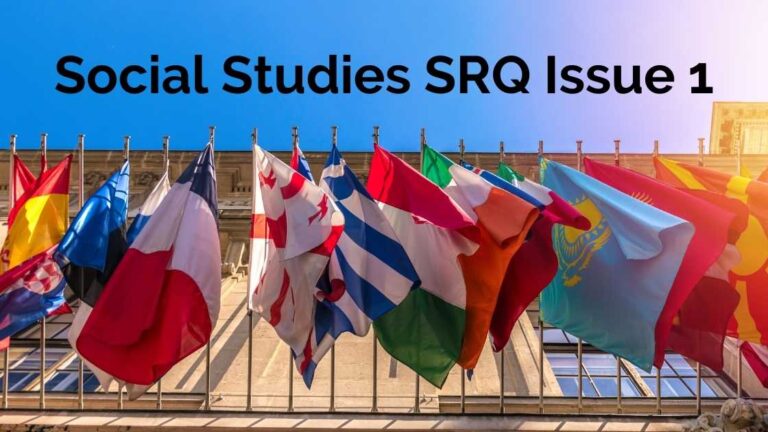
Complete Sample Social Studies Issue 1 SRQ
Especially for students struggling with the Social Studies SRQ Issue 1 questions: Here are some sample essays! Ace your examination with these samples!
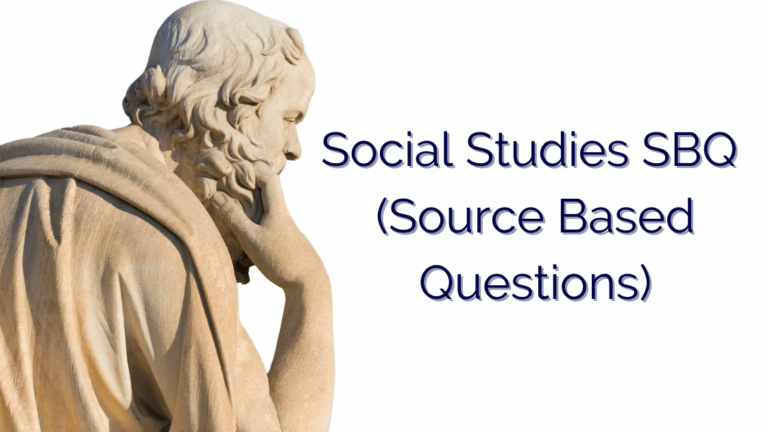
Social Studies SBQ (Source Based Questions)
Mastering Social Studies Source Based Questions is one of the most difficult tasks. Read on to find out more.

How to score 10/10 for Editing
Do you keep failing your Editing? How can you improve your Editing? Read on to find out how you can score full marks for the Editing section of the English paper.

2020 History Elective: Can we predict what is going to be tested?
In the upcoming 2020 History Elective examination, can we predict what is going to come out for the paper? Should we even try? Read on to find out more!

Social Studies Comparison Format
Is your child confused about the Social Studies Comparison question? If they are, read this blog to understand how to answer these sort of questions!
Korean War: History, Causes, and Effects Essay
- To find inspiration for your paper and overcome writer’s block
- As a source of information (ensure proper referencing)
- As a template for you assignment
Introduction
Causes of korean war, the causes of korean war are generally, course of the conflict, effect of korean war to american foreign policy.
Bibliography
The Korean War which is termed as the forgotten war was a military conflict that started in June 1950 between North Korean who were supported by peoples republic of China backed by Soviet Union and South Korean with support from the United Nations and the American forces.
The war was an episode of cold war where by the United States of America and Russia were fighting ideologically behind the scenes by using South and North Korea as their battle zone. After the world war two, British and American forces set a pro-western government in the southern part of Korean Peninsula while the Soviet Union initiated a communist rule in the North. The net effect of these ideological differences was the Korean War.
The causes of the Korean War can be examined in two facets:
- Ideological
Politically, the Soviet Union wanted Korea to be loyal to Russia .This was because Korea was seen as a springboard that would be used to initiate an attack on Russia. Korean being loyal to Russia was a strategy to prevent future aggression.
The major cause of the war however, was difference in ideology between South and North Korea with Russia and America behind the scene. The two Korean zones established two separate governments with different ideologies. This were the major event that initiated the conflict In Korea.
American and Soviet military occupation in North and South Korea.
The American and Soviet forces occupation in Korea divided the country on ideological basis. These differences resulted to the formation of 38 th parallel which was a border between South and North Korea. This boarder increasingly became politically contested by the two functions and attracted cross boarder raids. The situation became even worse when these cross border skirmishes escalated to open warfare when North Korean army attacked South Korea on June 1950.The two super power majorly the American and Soviet Union acted by providing support and war equipment’s to the two conflicting sides.
Role of the America and Soviet Union in armament and military support to South and NorthKorea.
The Russians backed the communist regime in North Korea with the help of Kim Il-Sung and established North Korean Peoples Army which was equipped by Russian made war equipments. In South Korea, American backed government benefited from training and support from the Americans army.
Military and strategic imbalance between North and South Korea
The America and Russia failure to withdraw their troops by the late 1948, led to tensions between the two sides. By 1949, the American had started to withdraw its troops but the Russian troops still remained in North Korea considering that Korea lay as its strategic base.
This was followed by invasion of South Korea by the North Korean army because of the military imbalance that existed in the region. This forced the American to return back and give reinforcement to South Korea which was by then over ran by North Korean Army in support of the Russian troops.
Korea, a formally a Japanese colony before the end of the Second World War, changed hands to allied powers after the defeat of Japan in the year 1948. The Americans occupied the southern part of Korea while the Soviet occupied the Northern region. Korea by this time was divided along 38 th parallel which demarked the boarder of the two governments.38 th parallel was an area of 2.5-mile that was a demilitarized zone between north and South Korea.
In June 1950, the North Korean people army attacked South Korea by crossing 38 th parallel. On June 28 th the same year Rhee who was the then leader of South Korean evacuated Seoul and ordered the bombardment of bridge across Han River to prevent North Korean forces from advancing south wards.
The inversion of South Korea forced Americans to intervene and on June 25 th 1950, United Nations in support of South Korea, jointly condemned North Korea’s action to invade the South. USSR challenged the decision and claimed that the Security Council resolution was based on the American intelligence and North Korea was not invited to the Security Council meeting which was a violation of the U.N. charter article 32.
North Korea continued its offensive utilizing both air and land invasion by use of about 231,000 military personnel. This offensive was successful in capturing significant southern territories such as Kaesong, Ongjin, chuncheon and Uijeonghu.
In this expedition, the North Korea people’s army used heavy military equipment such as 105T-34 and T-85 tanks, 150 Yak fighters and 200 artillery pieces. The South Korean forces were ill prepared for such offensive and within days they were overran by the advancing Northern army. Most of Southern forces either surrendered or joined the Northern Korean army. In response to this aggression, the then American president Henry Truman gave an order to general Mac Arthur who was stationed in Japan to transfer the troops in Japan to combat in Korea.
The battle of Osan was the first involvement of the American army in the Korean war. The war involved a task force comprised of 540 infantry men from 24 th infantry division on July 5 th 1950. This task force was unsuccessful in its campaign to repel the North Korean army and instead suffered a casualty of 180 soldiers of whom were either dead, wounded or taken prisoner. The task force lacked effective military equipment to fight the North Koreans T-34 and T-85 tanks. The American 24 th division suffered heavy loses and were pushed back to Taejeon.
Between August and September 1950, there was a significant escalation of conflict in Korea. This was the start of the battle of Pusan perimeter. At this battle, the American forces attempted to recapture then taken territories by the North Korean army. The United States Air force slowed North Korean advances by destroying 32 bridges.
The intense bombardment by the United States air force, made North Korean Units to fight during the nights and hide in ground tunnels during the day. The U.S. army destroyed transportation hubs and other key logistic positions which paralyzed North Korean advances.
Between October and December 1950, the Chinese entered the war on the side of the North Koreans. The United States seventh fleet was dispatched to protect Taiwan from people’s Republic of China under Mao Zedong. In 15 th October 1950, Charlie Company and 70 th Tank battalion Captured Namchonjam city and two days later Pyongyang which was the Capital of North Korea fell to the American 1 st cavalry division.
The first major offensive by China took place on 25 October by attacking the advancing U.N. forces at Sino-Korean border. Fighting on 38 th parallel happened between January and June 1951 when the U.N. command forces were ambushed by Chinese troops. The U.N. forces retreated to Suwon in the west.
On July 10 th 1951, there was a stalemate between the two warring sides which led to armistice being negotiated. The negotiation went on for the next two years. The armistice deal was reached with formation of Korean demilitarized zone ending the war. Both sides withdrew for their combat position. The U.N. was given the mandate to see a peaceful and fair resolution of the conflict in the effort to end the war. The war resulted to about 1,187,682 deaths and unprecedented destruction of property.
The Korean War on the side of Americans perpetuated the Truman’s doctrine which was of the opinion that Russia was trying to influence the world with forceful communist ideology and therefore the United States of America would help any country that was under threat of communist.
The Korean conflict also brought into focus in future efforts to win communism from spreading allover the world. The United States realized that the best solution to stop the spreading of communism ideology was to be military in nature. The war also made America to recognize China as a powerful military might in Asia. Future diplomatic actions would need to take into account Chinas potential might.
After the war, military assistance was provided to Philippine government, French Indochina and Taiwan with the motive to contain the spread of communism in Asia. This military assistance would extend also in Europe to country under communist threat of occupation.
Feldman, Tenzerh. The Korean war . Minneapolis: Twenty-First Century Books, 2004.
Fitzgerald, Brian. The Korean war: American’s forgotten wa r. Minneapolis: Compass Point Books, 2006.
Stueck, William. The Korean war : An international history. New Jersey: Princeton University Press, 1997.
- Ethic of War as the Way Avoid the Conflicts
- Burning Down of the Village in Platoon
- The Impact of Events in the Middle East on American Foreign Policy 1980s
- Homeland Security & Ethical Criminal Investigations
- Current Trends Affecting Global Hospitality Industry
- Why U.S. Troops Should Stay in Afghanistan
- An Individual’s Opinion Poisons a Nation
- The Libyan Conflict Explained
- Lehrack, Otto. First Battle: Operation Starlite and the Beginning of the Blood Debt in Vietnam Havertown, PA: Casemate, 2004
- The Significance of the Korean War
- Chicago (A-D)
- Chicago (N-B)
IvyPanda. (2018, October 10). Korean War: History, Causes, and Effects. https://ivypanda.com/essays/lees-korean-war/
"Korean War: History, Causes, and Effects." IvyPanda , 10 Oct. 2018, ivypanda.com/essays/lees-korean-war/.
IvyPanda . (2018) 'Korean War: History, Causes, and Effects'. 10 October.
IvyPanda . 2018. "Korean War: History, Causes, and Effects." October 10, 2018. https://ivypanda.com/essays/lees-korean-war/.
1. IvyPanda . "Korean War: History, Causes, and Effects." October 10, 2018. https://ivypanda.com/essays/lees-korean-war/.
IvyPanda . "Korean War: History, Causes, and Effects." October 10, 2018. https://ivypanda.com/essays/lees-korean-war/.
Home — Essay Samples — War — Korean War
Essays on Korean War
Korean war essay topics and outline examples, essay title 1: the korean war (1950-1953): uncovering the origins, cold war context, and global implications.
Thesis Statement: This essay delves into the complex origins of the Korean War, the Cold War context that fueled the conflict, and the far-reaching global implications of the war, including its impact on international alliances and the division of Korea.
- Introduction
- Background and Historical Context: Pre-war Korea and Its Division
- The Cold War Setting: U.S.-Soviet Rivalry and Proxy Wars
- The Outbreak of War: North Korea's Invasion and International Response
- The Course of the Conflict: Battles, Truce Talks, and Stalemate
- Global Implications: The Korean War's Impact on East Asia and International Relations
- Legacy and Repercussions: The Division of Korea and Ongoing Tensions
Essay Title 2: The Korean War's Forgotten Heroes: Examining the Role of United Nations Forces and the Armistice Agreement
Thesis Statement: This essay focuses on the often-overlooked contributions of United Nations forces in the Korean War, the complexities of the Armistice Agreement, and the enduring impact of the war on Korean society and international peacekeeping efforts.
- The United Nations Coalition: Multinational Forces in Korea
- The Armistice Negotiations: Challenges, Agreements, and Ongoing Tensions
- Forgotten Heroes: Stories of Courage and Sacrifice
- Korean War Veterans: Their Post-War Experiences and Commemoration
- Peacekeeping and Reconciliation Efforts: The Role of the United Nations
- Implications for Modern International Conflict Resolution
Essay Title 3: The Korean War and the Origins of the Cold War: Analyzing the Impact on U.S.-Soviet Relations and Global Alliances
Thesis Statement: This essay explores how the Korean War influenced U.S.-Soviet relations, the formation of military alliances such as NATO and the Warsaw Pact, and the Cold War's evolution into a global struggle for influence.
- The Korean War as a Catalyst: Escalation of Cold War Tensions
- Military Alliances: NATO, the Warsaw Pact, and the Globalization of the Cold War
- The U.S.-Soviet Confrontation: Proxy Warfare and Diplomatic Efforts
- International Response and Support for North and South Korea
- The Aftermath of the Korean War: Paving the Way for Future Cold War Conflicts
- Assessing the Korean War's Long-Term Impact on U.S.-Soviet Relations
The Korean War – a Conflict Between The Soviet Union and The United States
The local and global effects of the korean war, made-to-order essay as fast as you need it.
Each essay is customized to cater to your unique preferences
+ experts online
The Role of The Korean War in History
The origin of the korean conflict, the role of the battle of chipyong-ni in the korean war, the korean war and its impact on lawrence werner, let us write you an essay from scratch.
- 450+ experts on 30 subjects ready to help
- Custom essay delivered in as few as 3 hours
Historical Accuracy of The Book Korean War by Maurice Isserman
Solutions for disputes and disloyalty, depiction of the end of the korean war in the film the front line, the impact of war on korea.
25 June, 1950 - 27 July, 1953
Korean Peninsula, Yellow Sea, Sea of Japan, Korea Strait, China–North Korea border.
China, North Korea, South Korea, United Nations, United States
Korean War was a conflict between the Democratic People’s Republic of Korea (North Korea) and the Republic of Korea (South Korea) in which at least 2.5 million persons lost their lives. The war reached international proportions in June 1950 when North Korea, supplied and advised by the Soviet Union, invaded the South.
North Korean invasion of South Korea repelled; US-led United Nations invasion of North Korea repelled; Chinese and North Korean invasion of South Korea repelled; Korean Armistice Agreement signed in 1953; Korean conflict ongoing.
Relevant topics
- Vietnam War
- Israeli Palestinian Conflict
- The Spanish American War
- Syrian Civil War
- Atomic Bomb
- Nuclear Weapon
- Treaty of Versailles
By clicking “Check Writers’ Offers”, you agree to our terms of service and privacy policy . We’ll occasionally send you promo and account related email
No need to pay just yet!
We use cookies to personalyze your web-site experience. By continuing we’ll assume you board with our cookie policy .
- Instructions Followed To The Letter
- Deadlines Met At Every Stage
- Unique And Plagiarism Free
Please enter at least 3 characters

Fighting for the Hook
United Nations forces fought a series of bloody battles with Chinese and Korean Communists for a piece of strategic real estate known as “the Hook.”
This article appears in: February 2007
By Al Hemingway
Peering intently through a telescope, General Lemuel C. Shepherd, the commandant of the Marine Corps, scanned the shell-pocked Korean terrain in front of his position. Shepherd had made a special visit to the Korean front lines to obtain a firsthand view of the Main of Line of Resistance (MLR) his Marines were defending. In the early spring of 1952, under orders from the U.S. Eighth Army in Korea, the entire 25,000-man 1st Marine Division had moved from the east-central sector of the country to the western part of I Corps to man positions along the extreme left flank of an area called the Jamestown Line. In early March the Marines, joined by the attached 1st Korean Marine Corps, completed the move. Maj. Gen. John T. Selden, 1st Marine Division commander, now had 32 miles of harsh country to defend.
Shepherd, for his part, was concerned about the leathernecks’ difficult assignment. In front of their positions was a small speck of land protruding beyond the MLR like a huge thumb. This seemingly insignificant feature, called the Hook by those who had to defend it, dominated the approach to the vital Samichon Valley. The landscape surrounding the Hook was a defender’s nightmare—steep, rugged hills inundated the countryside. If the Chinese managed to break through the Marines’ lines, they could march unhindered all the way to Seoul, the capital of South Korea. As poor a military position as the Hook was, the Marines had no alternative but to occupy it. In enemy hands, the consequences would be catastrophic. Chinese occupation of the Hook would afford a corridor for the enemy to outflank the right flank and reach the Imjin River. This in turn would not only cut off the Marines from the adjacent 1st Commonwealth Division, but also probably render the entire United Nations position beyond the Imjin untenable.
Throughout the spring and summer of 1952, Marines and other Allied units battled the Communists for the various hills and other important terrain features. These bitter, sharp clashes were dubbed “the outpost battles.” In early October, the 7th Marines occupied the Jamestown Line near the Hook. To keep a watchful eye on their adversaries, the Marines established two small combat outposts, Seattle and Warsaw. On October 2, the Chinese struck at Seattle and seized it. Concerned about the Hook, the defenders decided to create another position dubbed Ronson (so named after a Marine had misplaced his Ronson lighter there after a night patrol) about 275 yards west of the Hook. Warsaw was 600 yards northeast of the salient.
Outmanned and Outgunned
The leathernecks’ main problem was manpower. The Marines, plus attached units, had 5,000 troops to defend the Hook. To alleviate the shortage, “clutch platoons” were organized, using Marine cooks, clerks, and motor transport personnel to perform Minuteman-type assignments. They could quickly be formed into reserve rifle platoons in extreme emergency conditions. The leathernecks were not only outmanned, but they were outgunned. To their front were the 356th and 357th Regiments, 119th Division, and 40th Chinese Communist Forces (CCF). Numbering about 7,000 men, the Chinese also possessed 10 battalions of artillery—something the Marines notably lacked—approximately 120 guns in all. In addition, the Marines also suffered from a severe shortage of 105mm and 155mm howitzer shells.
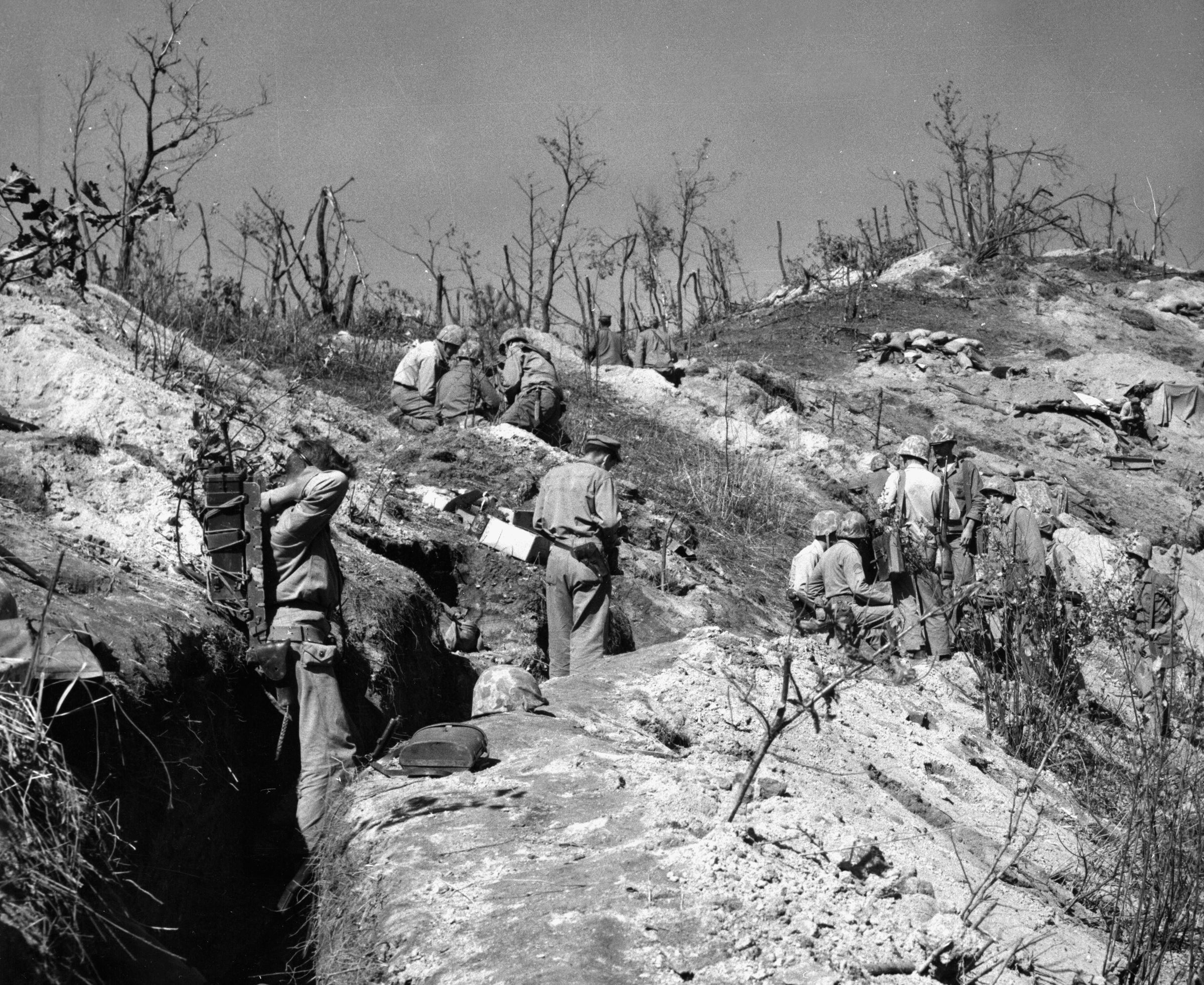
Enemy activity increased dramatically in the last week of October; thousands of artillery rounds were fired on Marine emplacements. Most of the enemy fire was concentrated on the Hook, Warsaw, and Ronson. Marine and Army artillery units responded, trying to silence the enemy guns. Air strikes and tanks guided by forward observers attempted to halt the incessant bombardment. Everyone was braced for the inevitable assault.
On the cold night of October 26, a company from the 3rd Battalion, 357th Regiment attacked Ronson’s small group, raining down mortar and artillery rounds. Trying in vain to hold on, the riflemen responded with automatic weapons fire. It was no use—every American defender was killed. While Ronson was being overrun, a large enemy force from the 9th Company, 357th Regiment descended on Warsaw, which was defended by a reinforced platoon from Company A, 1st Battalion, 7th Marines. Lieutenant John Babson quickly radioed for “box me in” fire (artillery fire that formed a protective shield around the outpost). Despite the heavy shelling, the Chinese penetrated the perimeter. The fighting was hand-to-hand. Just past 7 pm, a clutch platoon was readied to reinforce Warsaw when a radio transmission was received: “We are being overrun.” The outpost was assumed lost. However, just before 8 pm another message requested variable-time fuses to be detonated over the imperiled position. This was the last word heard from the defenders of Warsaw. Only three Marines survived the Communist attack.
As the two outposts were being decimated, a massive bombardment saturated the Hook itself. “Some 34,000 rounds of CCF artillery were used to soften the position before seizure,” Lt. Col. Norman Hicks wrote, “and when the enemy assault came, there were few able to resist.” Captain Paul Byrum’s Company C, 1st Battalion, 7th Marines guarded the important hill. He decided to reconnoiter the ridgeline after receiving a call from Ronson that they were being overrun. He and a sergeant were forced to split up because of the Communist mortar barrage. The sergeant was later killed, and Byrum was buried four times with dirt from near misses.
The Chinese Advance
At exactly 7 pm, the Chinese converged on the Hook in a classic three-pronged maneuver. In less than an hour the enemy had reached the main trench line of Charlie Company. “They were coming over the ridge, gangs of them yelling and blowing horns,” said Pfc. James Yarborough. “They had a horn that sounded like a milk cow. We couldn’t get our guns to work, and we only had two hand grenades. I threw one and my buddy had the pin pulled and was ready to throw the other when he got hit. I threw it.”
Yarborough and his friend managed to emerge from the bunker and lay motionless near the concertina wire on the perimeter. “I lay there and watched the bunker about two and a half hours,” he recalled. “My buddy was still close to it. Finally they came out and it looked as if they were going to shoot him. I still had my carbine and I fired to scatter them. Somehow I got through the wire. My buddy, he got away too.”

Chinese infantrymen breached the wire and infiltrated the trenches. A forward observation team from Battery F, 2nd Battalion, 11th Marines directed accurate fire on the enemy attackers. When they lost communications, 2nd Lt. Sherrod Skinner, Jr., directed his men to leave the bunker and continue to fight. Trapped by the overwhelming enemy numbers, he organized a makeshift defensive position and poured fire into the advancing Communists. During the intense combat, Skinner was struck twice while attempting to replenish the machine-gun squads with ammunition and grenades.
Despite their heroic stand, the Marines were outnumbered by the Chinese. Skinner ordered everyone back to their bunkers. Corporal Franklin Roy and Pfc. Vance Worster killed a dozen enemy soldiers before depleting their ammunition. Skinner felt their only hope was to play dead. As the men lay motionless, the enemy searched them. As they were departing, they tossed chicoms (Chinese hand grenades) into the bunker opening. One of the projectiles peppered Worster’s legs with shrapnel. Skinner rolled over on another one, taking the full brunt of the explosion, which killed him instantly.
Although wounded several times, Roy crawled from the sandbagged bunker and discovered a box of hand grenades. He began lobbing them at the enemy until he exhausted his supply. He finally made his way to friendly lines and informed them of what had happened. Unknown to Roy, Worster had already succumbed to his wounds. Skinner was awarded a posthumous Medal of Honor, and Roy and Worster received Navy Crosses for their bravery.
The determined attack on the Hook soon forced Charlie Company from its positions. By dawn, the Communists had gained a toehold on the Hook. Marine historian Lt. Col. Robert Heinl, Jr., present during the battle, later commented, “Soon it was apparent that a serious situation confronted the 7th Marines. This was clearly reflected in the faces and demeanor of the regimental commander and executive officer. Enemy fire was unceasing, and his attack continued.” What remained of Charlie Company had climbed a crest overlooking the Hook and began firing down on the occupants. A platoon from Able Company, originally slated to go to Warsaw, joined them there, keeping the Communists in check and preventing their advance.
Retaking the Hook
More reinforcements were needed, however, if the enemy was to be driven from the Hook. Captain Fred McLaughlin’s Able Company, 1st Battalion, 7th Marines was tapped to link up with Charlie Company and retake the all-important position. McLaughlin had just minutes to devise a plan of attack. He told Lieutenant Stanley Rauh to take a platoon, dig in on the left flank, and deliver as much firepower as possible to create a diversion. Meanwhile, he would take the remaining force of approximately 150 men around the right flank.
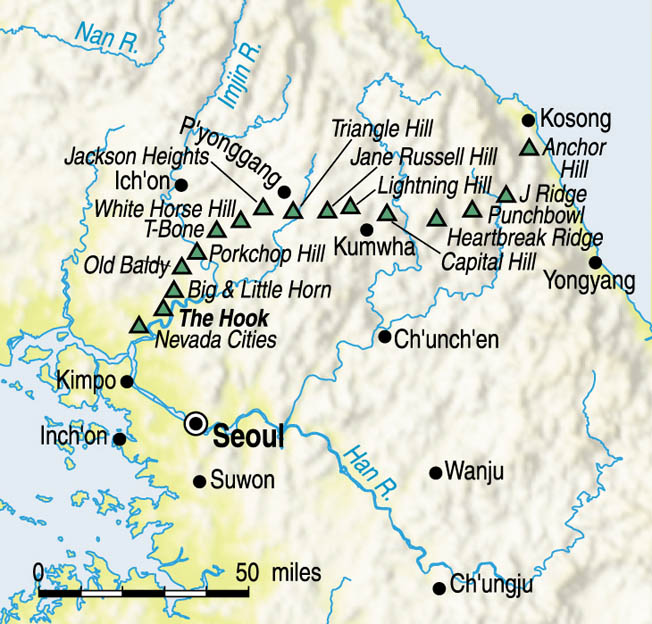
Just before daylight, Rauh’s men moved out. As the Marines made their way toward the Hook, the Communist shelling became heavier. When their radio was destroyed by enemy fire, Rauh grabbed a tank’s infantry phone in the rear of the tracked vehicle. Suddenly a white phosphorous round impacted close to them, and Rauh and a sergeant were wounded. The intense heat from the shell fused shut the bolt on Rauh’s carbine and scorched his hands. Because of the lack of water, his men urinated on his hands to stop the burning.
Reaching the command post, Rauh found Byrum still alive. He set out to rescue several isolated pockets of trapped Marines who had been fighting all night. Pfc. Enrique Romero-Nieves picked up an armful of hand grenades and singlehandedly assaulted an enemy bunker. When a bullet shattered his arm, he continued his advance using his belt buckle to pull the pins from the grenades as he moved forward. He survived to be presented a Navy Cross.
Marine and Army rounds began impacting on Warsaw to prevent the enemy from using the position as a forward observation point. Heavy fighting continued at the Hook as Marine tanks positioned themselves on any flat surface they could find and pounded the Chinese now holding fortifications that had been held by the leathernecks a few hours before. Fighter aircraft strafed and napalmed enemy troops attempting to reinforce the Hook from the former Marine outpost on Warsaw. In spite of the superb support, the battle was far from over. The enemy displayed no signs of retreating from the Hook. Rauh recalled: “Communications on the hook were terrible due to the incoming, the terrain and the general confusion of battle. At one point I was talking to the battalion by radio not three feet away from and facing my radioman when a grenade landed on his chest, killing him—I didn’t get touched—only severely jarred. A few moments later a mortar fragment tore the flesh off above my knee.”
The situation at the Hook was desperate. Colonel Thomas C. Moore, Jr., 7th Marines commander, had no choice but to release his last reserve company. Realizing that Able Company and the remnants of Charlie were too weak to push the enemy off the Hook, Moore decided to send in Company H, 3rd Battalion. The enemy, now consolidating forces and moving on the adjacent Hill 146, had to be stopped.
While the beleaguered Marines were immersed in bitter fighting to regain the Hook, the CCF hurled themselves against the nearby outposts of Carson-Reno-Vegas. Defending these positions were elements of the 2nd Battalion, 7th Marines. A patrol from Company E had just set up an ambush when two CCF companies, moving to attack Reno, wandered into their fields of fire. Just as the enemy was about to advance, the riflemen opened fire, catching the Communists completely by surprise. A few hours later the Chinese returned in force, assaulting the Marines’ perimeter in waves. As the enemy pressed forward, the leathernecks took shelter in their reinforced bunkers while artillery from the 11th Marines caught the CCF units in the open, forcing them to retreat. Reno had been saved.
In the predawn hours, How Company slowly made its way toward the Hook. At 8 am, Captain Bernard Belant ordered his company forward. Leading the charge was 2nd Lt. George H. O’Brien, Jr., from Fort Worth, Texas. With his platoon following him, he zigzagged down the slope toward the main trench line. A burst from an enemy rifle struck him in the arm, slamming him to the ground. Undaunted, O’Brien leaped to his feet and continued the assault. He tossed hand grenades in enemy bunkers as he urged his men on.

One eyewitness account of O’Brien’s actions that day noted, “Five gooks jumped out of nowhere and went for O’Brien. The guy must have had tremendous reflexes, because he dropped all five. He was also wounded, but did this stop him? Hell, no! He continued to lead his platoon. He must have been a hell of an officer.” For four hours O’Brien’s platoon held off the Chinese. When they could advance no farther, the platoon formed a defensive perimeter and waited for any enemy counterattack. O’Brien remained with his men until they were relieved by a fresh unit. For his actions at the Hook, O’Brien later would have the Medal of Honor draped around his neck by President Dwight D. Eisenhower.
In spite of the valorous attempts to retake the Hook, the enemy still held onto it. On the morning of October 27, Company I, 3rd Battalion, 1st Marines was told to move up and attack. With artillery support from the 11th Marines and additional firepower from four Corsairs, the first platoon had made it to the crest and by mid-afternoon the entire company was advancing. A company of CCF troops was pouring rifle and automatic weapons fire at the leathernecks, who literally had to crawl toward their objective. Chinese gunners were also delivering devastating fire on the regimental command post.
By 5 pm, Item Company Marines had fought their way to the trenches but were forced to pull back when the Communists opened an overwhelming broadside of machine-gun and rifle fire. Most of the riflemen sought refuge on the reverse slope to avoid being caught in an enemy barrage. By nightfall, Company B, 1st Battalion, 7th Marines was assaulting the enemy trenches at the Hook on the left of Company I. Baker Company infantrymen found it tough going as they reconnoitered the many shell craters that dotted the battle-scarred landscape to reach their jumping-off point and strike at the enemy.
Just past midnight on the 28th, the Marines charged, blasting the Chinese with small-arms fire. A flurry of chicoms met the attackers head-on. Throughout the night, Marine artillery hammered the CCF units. By dawn the Hook was taken. Captain Fred McLaughlin, in charge of retrieving any dead and wounded after the battle, later remembered, “I went around an abandoned trench line at one point and there was a face looking at me from the side of the hill. It was just like it was painted on the side of the hill. It was a Chinese trooper who had been blown into the side of the hill, just the face. We dug these people out. I don’t know how many. It seems to me that over a period from 0800 in the morning until 1500 in the afternoon, we probably located 40-50. Most of them were Chinese but we did recover quite a number of American boys who had given their lives up there on that awful hill that day.”
After the savage fighting to seize the Hook, General Mark W. Clark, commander of Allied forces in the Far East, penned a letter to Secretary of Defense Robert Lovett admonishing the Department of Defense for the shortage of artillery shells. The following year, Congress conducted a series of hearings to explore the situation. It was too late for the young men who had died at the Hook. The penetration by the Chinese of the MLR and the capture of the Hook for 36 hours was the first time the enemy had held any Marine outpost for a long time. In the end, the Chinese paid dearly for their incursion, losing 494 killed and 370 wounded. Marine losses were significant as well, with 82 killed, 386 wounded, and 27 missing. The Chinese, however, were determined to capture and hold the valuable piece of land at any price. Soon they would return.
Another Chinese Assault
On November 3, Company D of the 1st Black Watch Regiment and the Canadian Princess Patricia Light Infantry relieved the Marines. Lt. Col. David Rose, commanding officer of the 1st Black Watch Regiment, immediately set out to rebuild and reinforce the fortifications on the Hook, Ronson, Warsaw, the Sausage (a ridge near Hill 121), and Hills 121 and 146. Although the Jocks (slang for British soldiers) did not particularly like their new assignment of digging improved trenches, Rose realized the importance of the task. An improved barbed wire system was installed and communication units laid a new complex pattern of wireless sets and field phones, in some cases doubling and even tripling the number to enhance communications in the event of another attack.
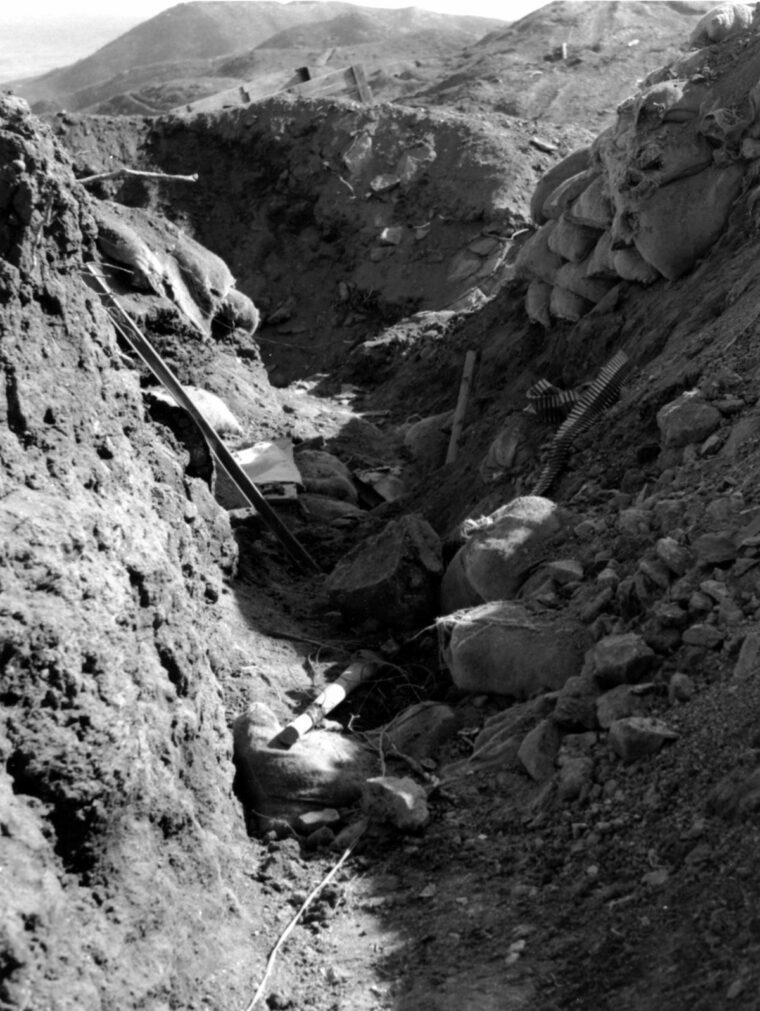
Rose’s elaborate plan was only half completed when, on the night of November 18, Chinese soldiers were spotted by sentries at Warsaw. The enemy quickly overran Warsaw and assaulted the Hook. From their positions at Yong Dong, about 2,500 yards away, machine gunners from the Duke of Wellington Regiment supported the Black Watch by firing on fixed lines across the Samichon Valley and over the heads of the Black Watch. In the end, the Dukes expended over 50,000 rounds in 11 hours. Private Neil Deck of the 3rd Battalion, Canadian Princess Pats later recalled, “In total, we were on the Hook three nights that time. On the second and third nights, I dug the trench deeper as it had been destroyed by the shelling. It was cold and the ground was frozen, so I used a pick when I heard a hissing noise coming from the bottom of the trench. I reached down and felt some cloth. Pulling on it, I realized it was a coat with a body inside. It was one of the British. He was bloated and the noise I heard was the air coming out of him after I had punctured him with the pick. I got sick to my stomach again.”
The Chinese withdrew, but a short time later the all-too familiar sound of a bugle pierced the night air as the enemy swarmed back over the Hook with a vengeance. The Jocks of the Black Watch were forced to pull back under the sheer weight of the advancing Chinese. With the support of the Centurion tanks from B Squadron, the Royal Inniskilling Dragoons finally drove off the CCF soldiers, and the Hook was once again in Allied hands.
After a two-month respite, the Black Watch returned to the Hook in January 1953. Companies were deployed to Hills 121 and the Sausage. One company from the Dukes established headquarters on Hill 146. Nothing changed as the Chinese artillery kept up the tempo with steady bombardments. Their guns, secreted in the sides of hills, were pulled out to fire and then rolled back to be hidden away from U.N. spotter planes.
“The Black Watch Do Not Withdraw”
In the spring, the Hook exploded in colors as the fields came alive again with flowers and weeds. There was no time, however, to admire the scenery. On May 7, 1953, an observation plane was shot down as it was attempted to locate Communist artillery pounding Commonwealth positions on the Hook and surrounding hills. The Jocks on Warsaw saw CCF units massing for an apparent assault. After ordering a withdrawal from Warsaw, Rose radioed for artillery support. Corps artillery sent 72 eight-inch shells screaming into the enemy troops. This seemed to take the wind out of the Chinese for the moment.
By 2 am, the Communists were back. This time the British soldiers from Ronson anticipated the enemy’s intentions. The Chinese were cut to pieces as the 20th Field Regiment sent proximity-fused high-explosive rounds and three-inch mortar shells near Ronson. Turkish units assisted the Black Watch with additional support. Fearing that the British unit had been overrun, an English-speaking Turkish officer telephoned the Black Watch CP and talked to Lt. Col. Rose. “How, many casualties have you?” the Turkish officer asked. “A few,” replied Rose. “Have you withdrawn?” the officer asked. “The Black Watch do not withdraw,” snapped Rose.
Rose, however, was close to being overrun; the Chinese had managed to crawl to within a mere 20 yards of his forward trench line. One machine gun nest, manned by Black Watch privates, let loose 7,500 rounds at the enemy hordes. After a fierce counterattack, the Black Watch drove the enemy back. On May 12, the battered Black Watch was relieved by elements of the Duke of Wellington’s Regiment. In addition, two troops from C Squadron, 1st Royal Tanks brought their Centurions up for additional punch in the event of another attack.

As the night progressed, Chinese loudspeakers kept up a constant haranguing, warning the Dukes that they would be ousted from the Hook by an overwhelming CCF force. At 11 pm on May 17, the enemy was heard approaching the Hook. An artillery barrage made them retreat, and in the ensuing action a CCF soldier was captured. He relayed the unpleasant information that the Dukes were outnumbered five-to-one and that another major assault was imminent. For the following 10 days, the Communists and the Dukes were in a constant sparring match. Patrols from both sides were dispatched to learn each other’s intentions. Sometimes they would engage in brief but hot firefights. Artillery duels were a daily occurrence. “Bunker life was particularly unsavory with having to share one’s abode with rats, mice and other vermin and being inundated with various insecticides and smells of petroleum-burning heaters in a confined underground situation,” recalled Lieutenant Alec Weaver of the 2nd Royal Australian Regiment (RAR) of his tour of duty on the Hook.
In the darkness on May 29, approximately 100 Chinese infantrymen attempted a lateral approach from Hill 121, trying to capture Ronson. They were spotted and annihilated as they tried in a vain attempt to charge, and 30 mangled bodies were on the wire the next morning as testimony to the futility of the attack. During this period, more than 37,000 shells were fired from British guns. In addition, an unbelievable 10,000 mortar rounds were discharged, as well as 500,000 rounds of small-arms ammunition. One American howitzer let loose an illumination round every two minutes for seven hours. When the full extent of the devastation on the Hook was revealed, 10,000 Chinese shells had ploughed the terrain into six-foot furrows and leveled it like a well-worn football field. Hundreds of Chinese had been killed and thousands wounded. The Dukes had lost 28 killed and 121 wounded and 16 missing. For their heroic defense of the Hook, the Dukes were presented with a battle honor for their colors that read: “The Hook 1953.” Headquarters Company of the 1st Battalion was even renamed Hook Company.
Nearing Armistice
The war, unfortunately, was not over—peace talks between the two sides were painfully slow. Realizing that a truce was near, the Chinese were determined to seize as much terrain as possible, and the Hook was high on their list. Another series of attacks against the Hods and the surrounding hills was planned. Throughout the month of July, the Chinese stepped up offensive operations near the Hook. Boulder City, a Marine outpost, came under heavy attack as well. On the night of July 24, Chinese forces with orders to fight to the last man moved against Hills 111 and 119. Company H, 3rd Battalion, 7th Marines was tied in with a machine-gun section from the 2nd RAR led by Sergeant Brian C. Cooper.
In an area designated Betty Grable, the enemy began to form. Allied artillery hammered them as they readied themselves for the coming attack. The CCF units descended on Hill 111 and were soon in the trenches fighting hand-to-hand. British artillery sent scores of high-explosive rounds toward Hills 111 and 119. The machine-gun section from the 2nd RAR on the leathernecks’ right flank also provided timely support. “The scream and thud of incoming artillery and mortar fire was constant,” wrote Private Ron Walker of the 2nd RAR, “the only difference being the closeness of the burst. Whilst being showered with lumps of dirt and debris I waited for the one burst that might be destined to silence me forever.”
Fighting also erupted on Hill 121 as action continued for the next several days on almost every hill and outpost. “Medium shells sounding like express trains passed over us with plenty of crest clearance,” wrote Bruce Matthews of the New Zealand 16th Field Regiment. “But right above our heads 16th Field’s 25-pounder shells were just clearing our crest. An occasional shell exploded over us. Toward midnight, the tempo of the artillery eased off. The U.S. Marines still had an intact line.” After the battle was over, a young British officer from one of the artillery units that had supported the Marines visited their regimental headquarters. He read to the amazed leathernecks the long list of the different types of rounds that had been fired in their behalf. When he finished, the Marine staff was astounded at his flawless rendition. He then smiled and said, “But I am authorized to settle for two bottles of your best whiskey.”
On July 27, an armistice was signed, ending the Korean conflict. Search parties combed the area around the Hook for any dead, wounded, or missing. Lieutenant Weaver of the 2nd RAR remembered, “The carnage was awe inspiring and the stench overbearing. It was a great relief to be able to leave our battered trenches and the horrific scene.” Sadly, the heroic actions of those who fought so bravely on the Hook have been swept into the dustbin of history. But for those who were there, it remains as vivid today as it did more than 50 years ago. Survivor Ron Walker summed it up best: “There was a certain reluctance to leave, as if a certain something had been left behind and more time should be spent looking for it.”
Back to the issue this appears in
Join The Conversation
One thought on “ fighting for the hook ”.
Error in fact: British troops are NOT known as “Jocks.” Only Scottish troops, and the Black Watch (now amalgamated) was a Scottish regiment.
Leave a Reply Cancel reply
You must be logged in to post a comment.
Share This Article
- via= " class="share-btn twitter">
Related Articles
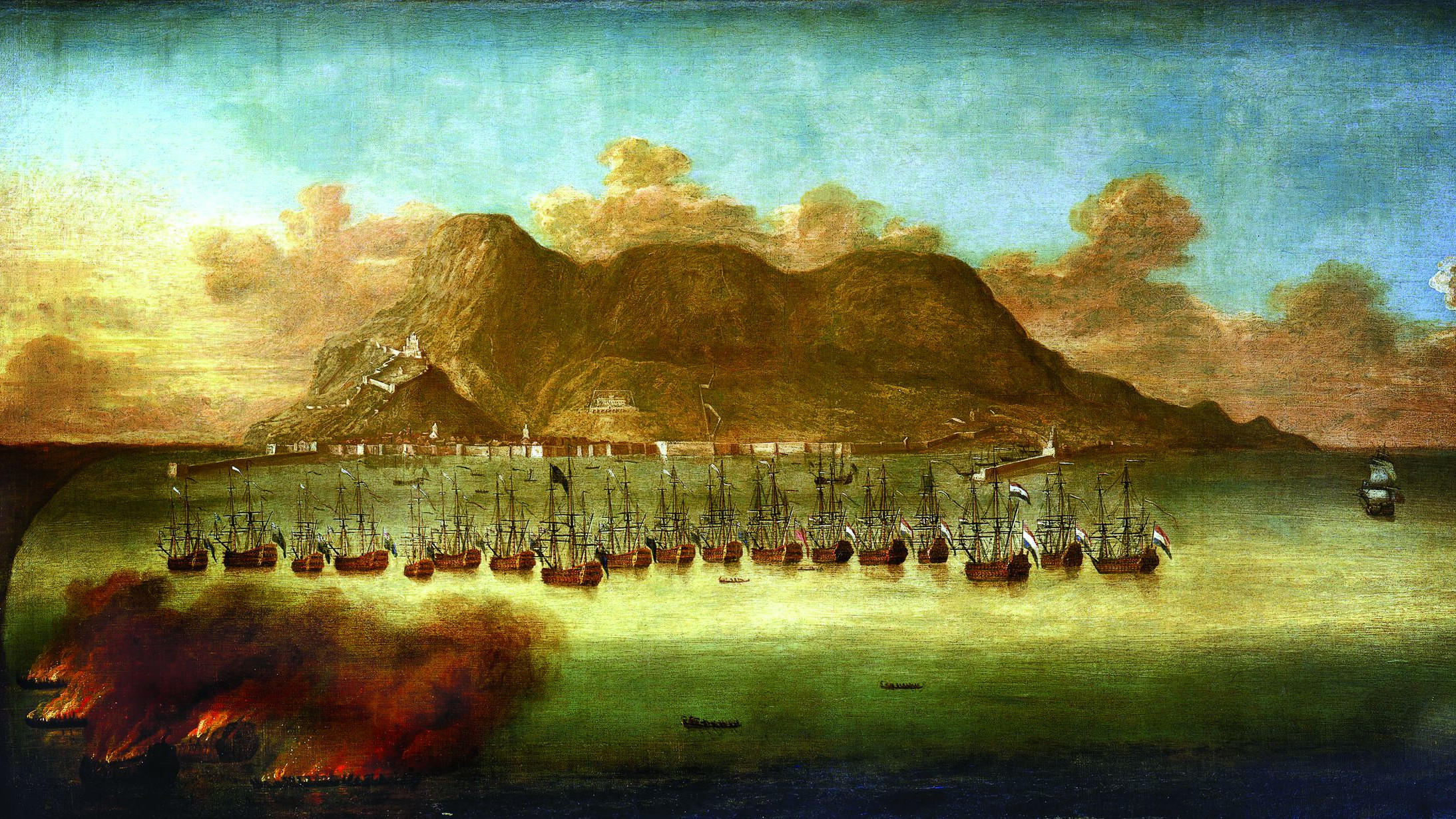
Military History
Capturing the Rock: Gibraltar 1704
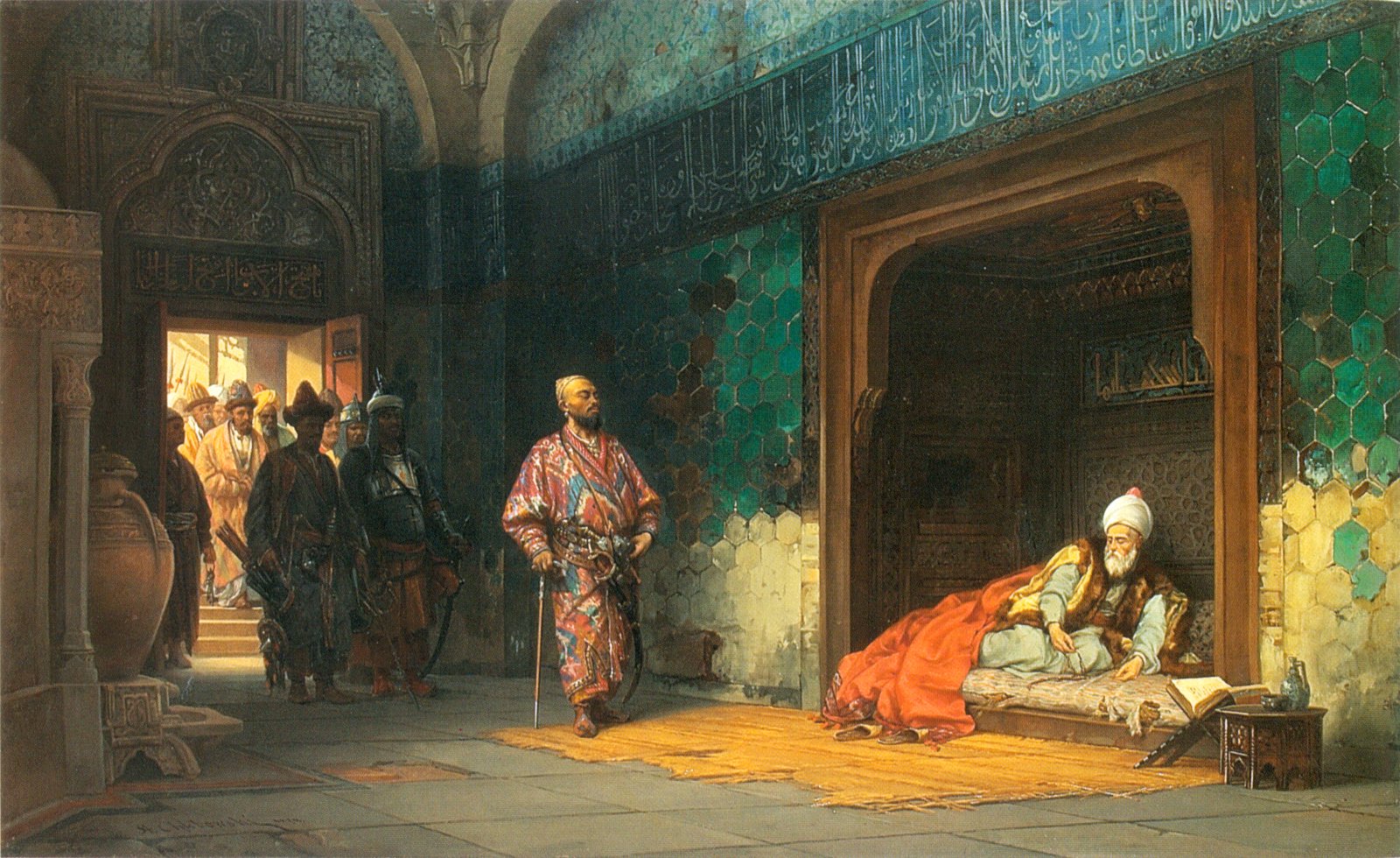

Weighing the Odds of Crusader Success
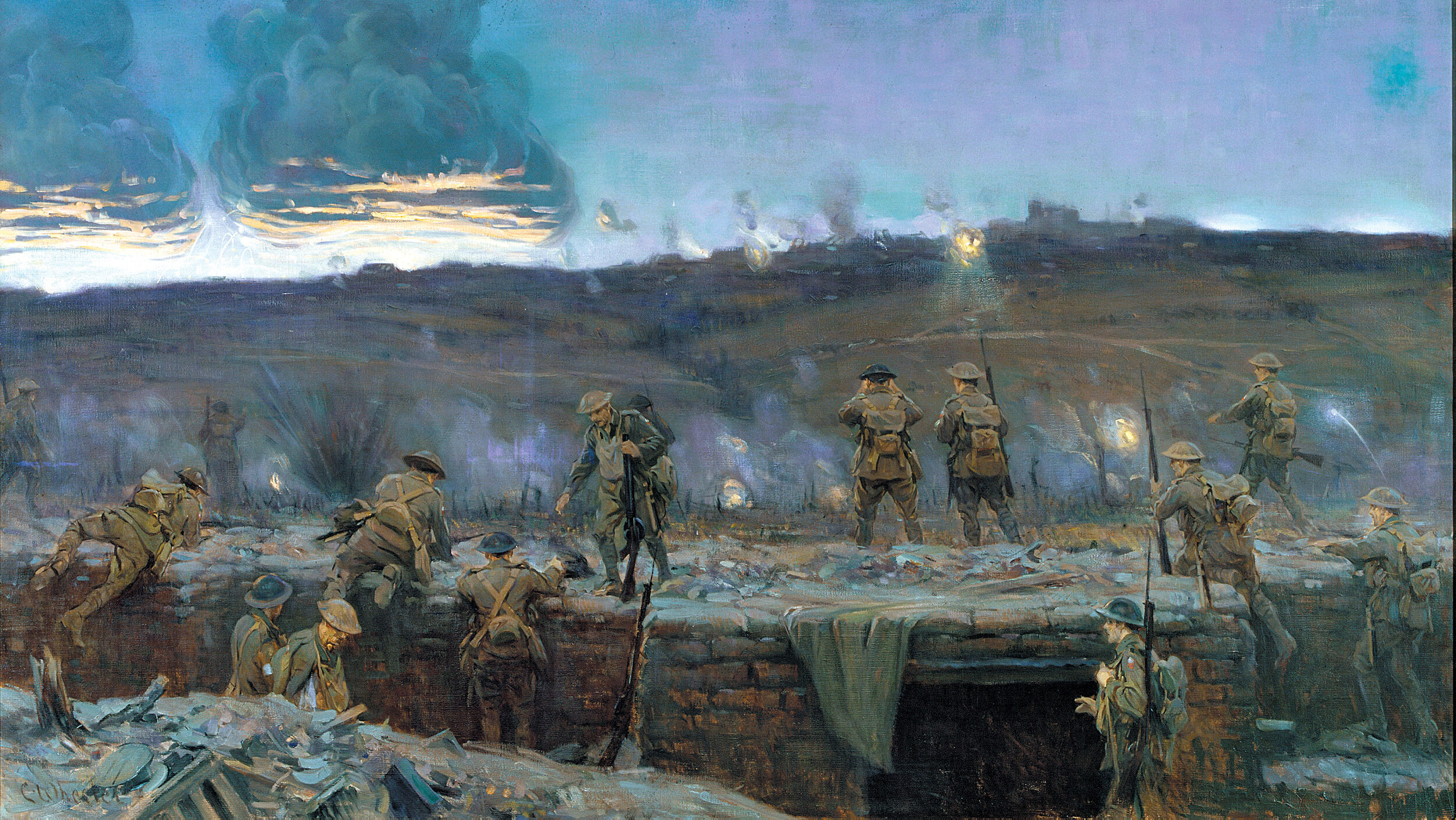
Australia’s Venerable Albert Jacka
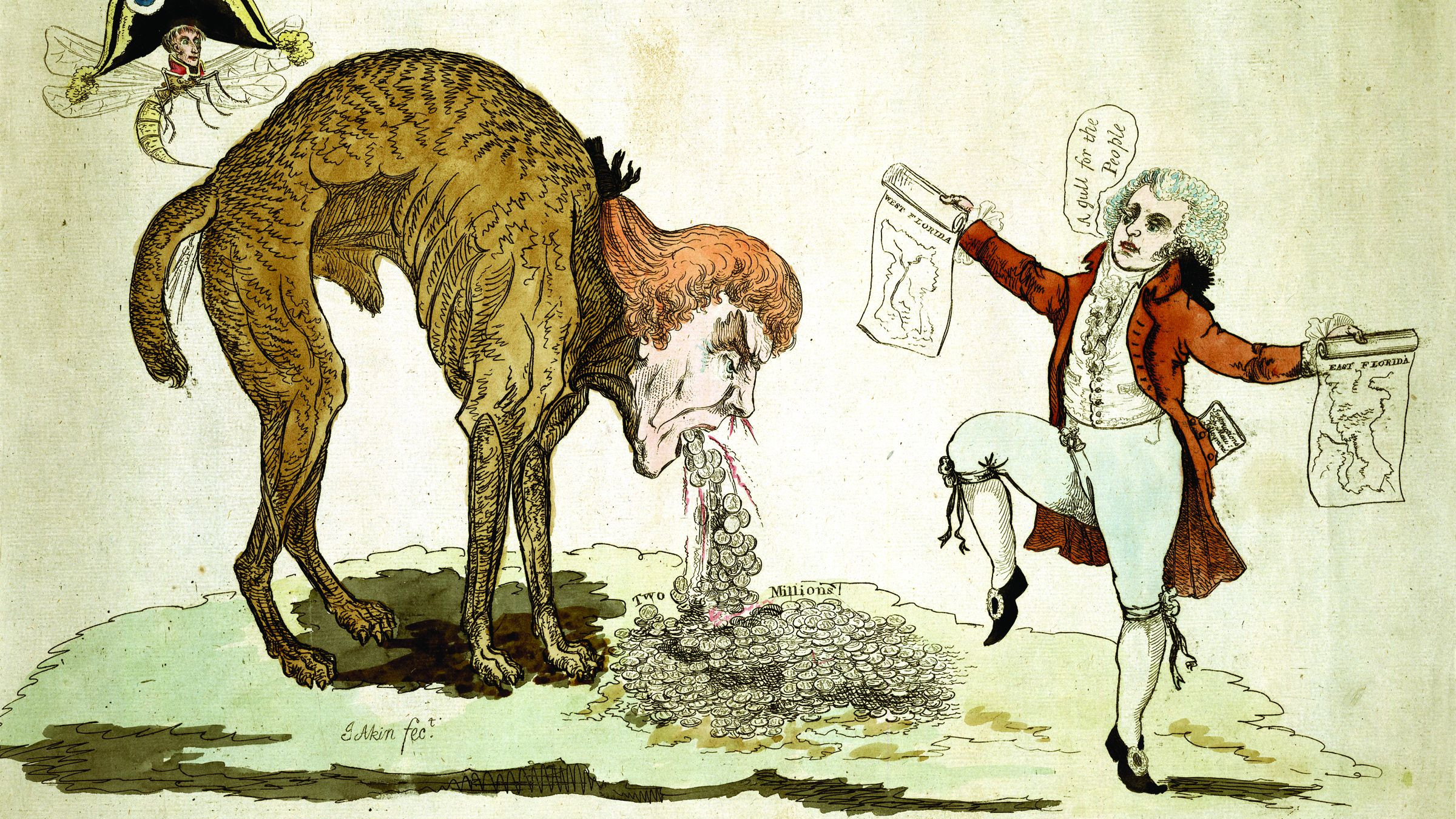
The Florida Annexation
From around the network.
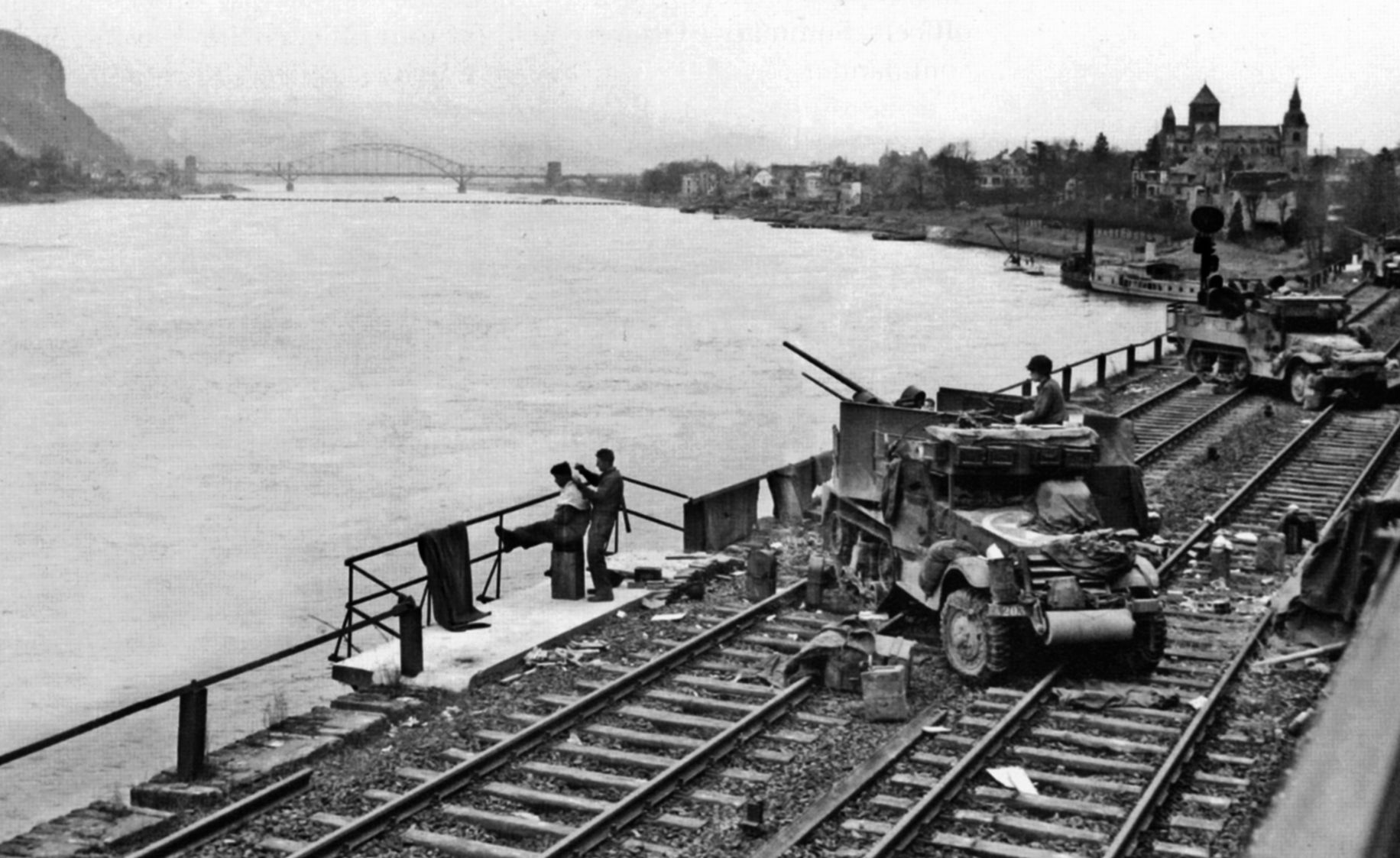
Crossing the Rhine at Remagen
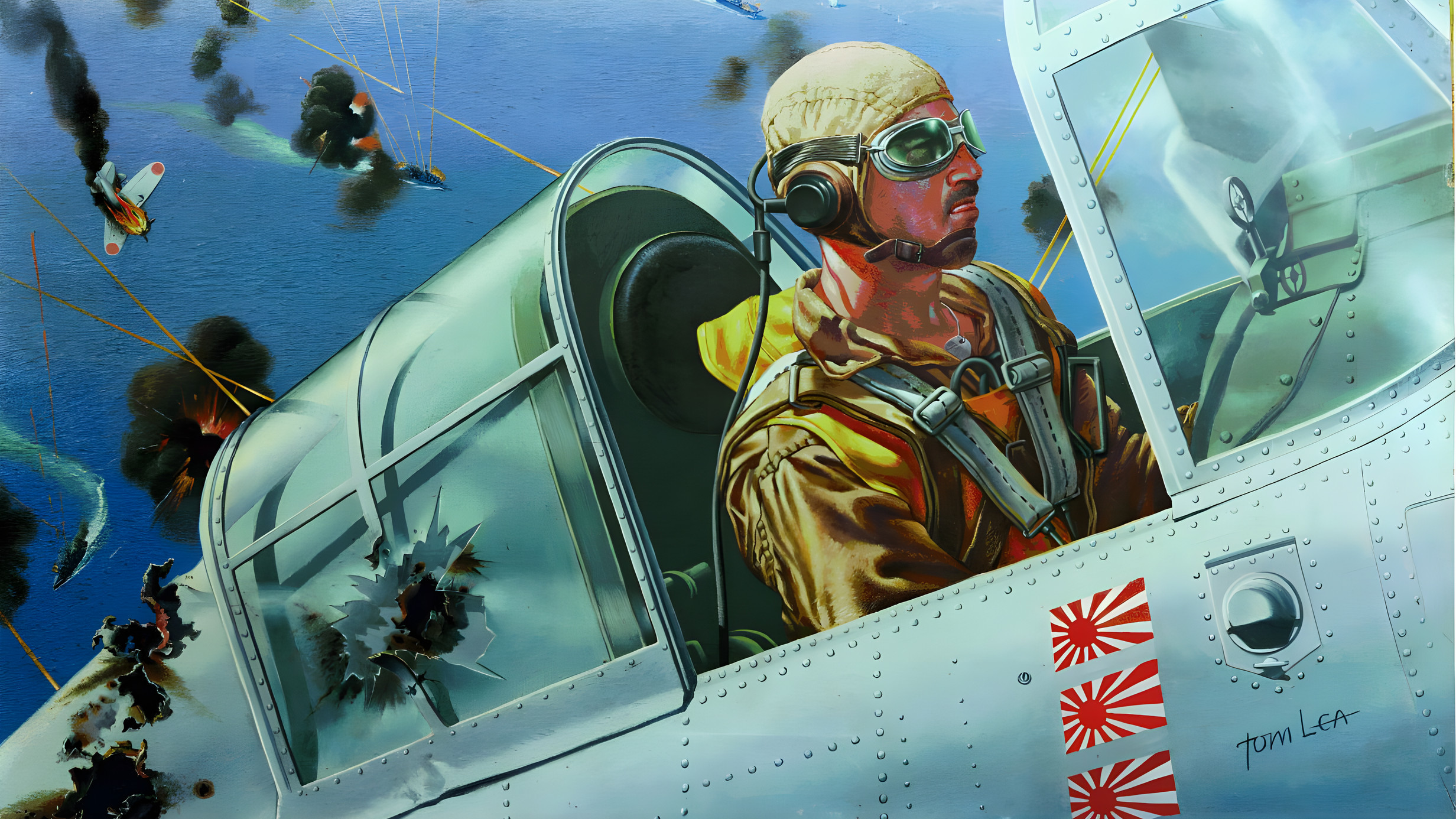
Get the Transports!
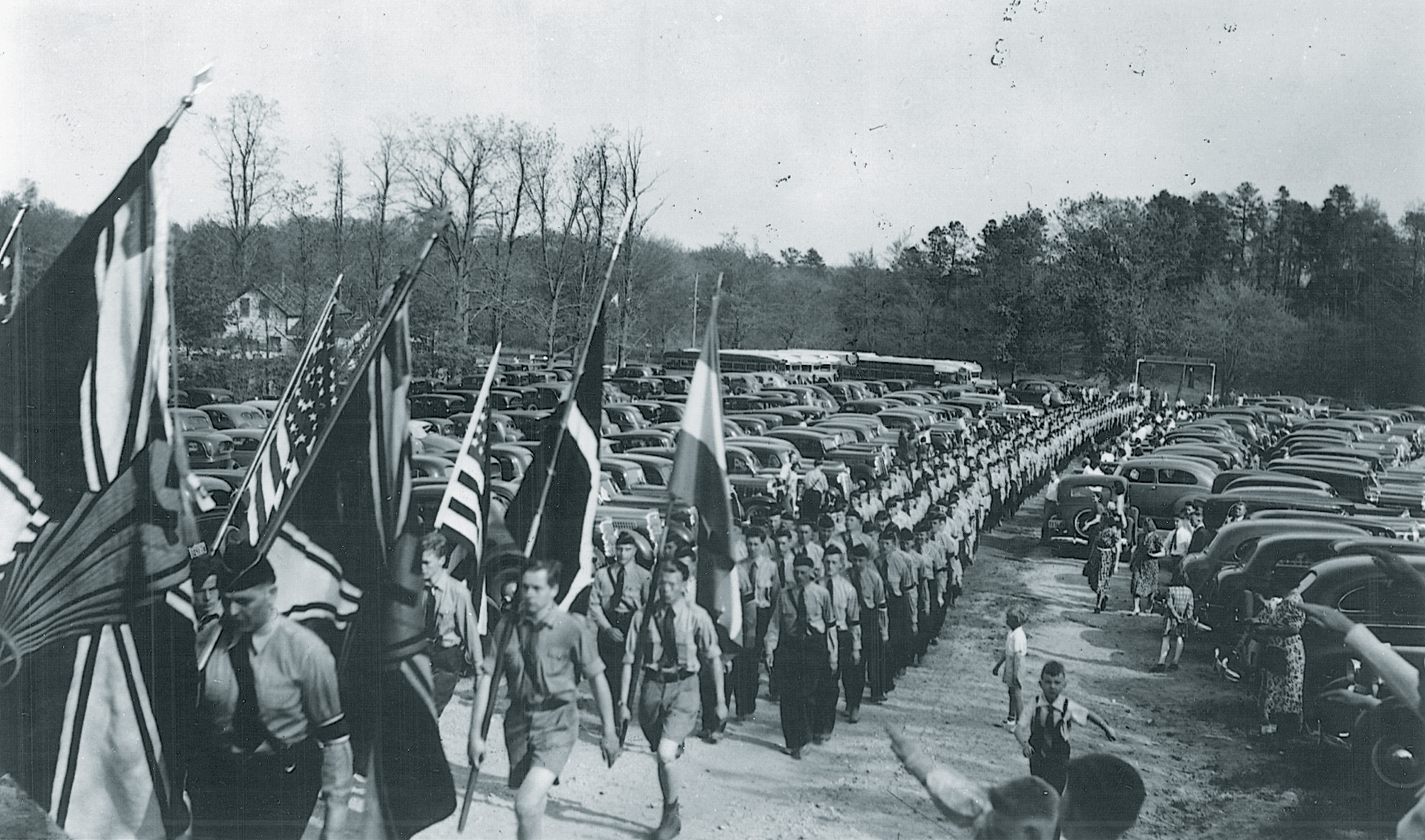
The German American Bund: Confessions of a Nazi Spy
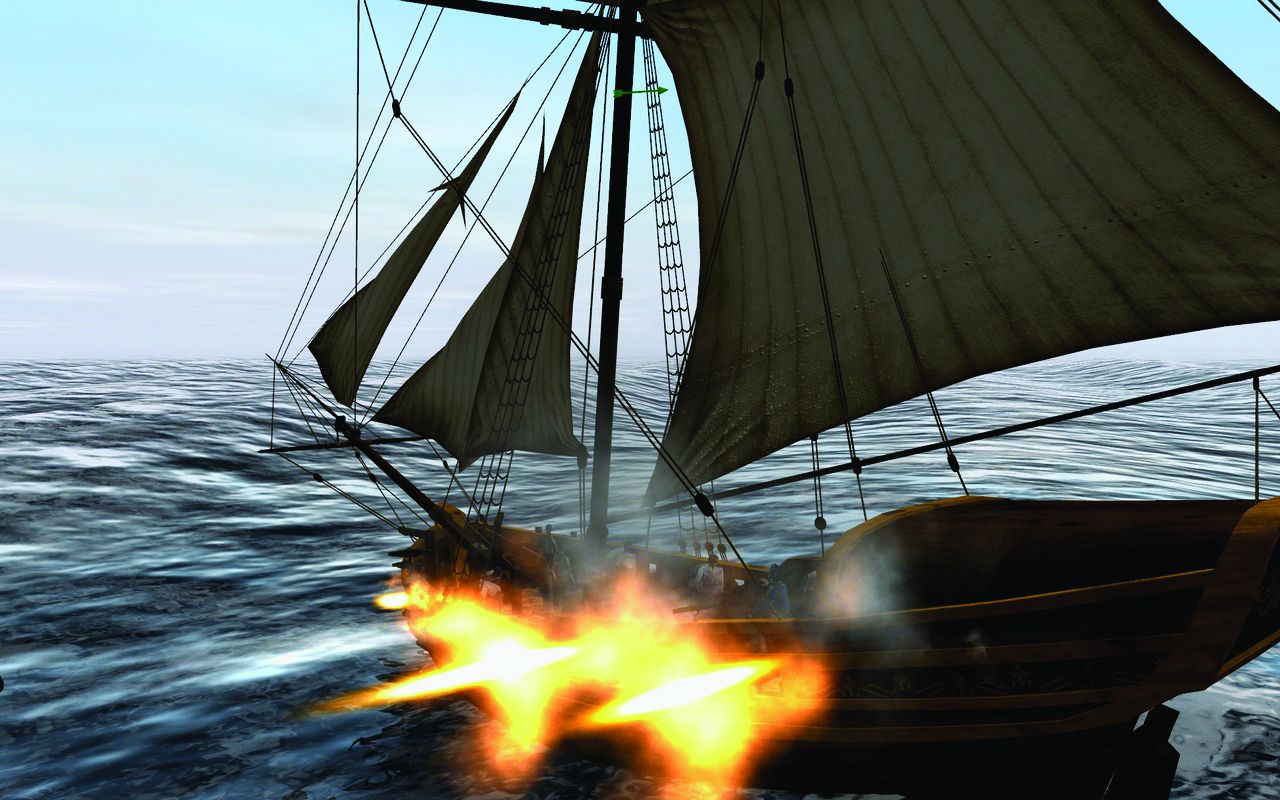
Military Games
Paradox Interactive’s East India Company
Memory Bank Multiple Perspectives on the Korean War
Read More »
Multiple Perspectives on the Korean War
But as with all historical interpretation, there are other perspectives to consider. The Soviet Union, for its part, denied Truman’s accusation that it was directly responsible. The Soviets believed that the war was “an internal matter that the Koreans would [settle] among themselves.” They argued that North Korea’s leader Kim Il Sung hatched the invasion plan on his own, then pressed the Soviet Union for aid. The Soviet Union reluctantly agreed to help as Stalin became more and more worried about widening American control in Asia. Stalin therefore approved Kim Il Sung’s plan for invasion, but only after being pressured by Chairman Mao Zedong, leader of the new communist People’s Republic of China.
A historian’s job is to account for as many different perspectives as possible. But sometimes language gets in the way. In order to fully understand the Korean War, historians have had to study documents, conversations, speeches and other communications in multiple languages, including Korean, Chinese, English, Japanese and Russian.
In 1995, the famous Chinese historian Shen Zhihua set out to solve a major problem posed by the war. Many people in the west had argued for decades, as Truman did, that North Korea invaded South Korea at the direction of the Soviet Union. Skeptical of that argument, Zhihua spent 1.4 million yuan ($220,000) of his own money to buy declassified documents from Russian historical archives. Then, he had the papers translated into Chinese so he could read them alongside Chinese government documents.
Zhihua found that Stalin had encouraged Mao Zedong to support North Korea’s invasion plan, vaguely promising Soviet air cover to protect North Korean troops. However, Stalin never believed that the United States and the UN would enter the war, and was reluctant to send the Soviet Air Force because he feared direct confrontation with the United States. When the United States landed at Incheon, Mao recognized that the United States and the UN could quickly overrun North Korea. At that point, he decided to support North Korea with or without Soviet aid, as he was determined to stop the Americans. Stalin eventually did send in the Soviet Air Force, but only after pressure from Mao. Zhihua argued that since China decided to take the lead, the Soviet Union played a weaker role in the war than most western historians believed.
The North Koreans had their own view. They argued that the war began not with their invasion of the south, but with earlier border attacks by South Korean leader Syngman Rhee’s forces, ordered by the United States. The DPRK maintains that the American government planned the war in order to shore up the collapsing Rhee government, to help the American economy and to spread its power throughout Asia and around the world.
Journalist Wilfred Burchett reported on those border incidents prior to the North Korean invasion:
“According to my own, still incomplete, investigation, the war started in fact in August-September 1949 and not in June 1950. Repeated attacks were made along key sections of the 38th parallel throughout the summer of 1949, by Rhee’s forces, aiming at securing jump-off positions for a full-scale invasion of the north. What happened later was that the North Korean forces simply decided that things had gone far enough and that the next assault by Rhee’s forces would be repulsed; that- having exhausted all possibilities of peaceful unification, those forces would be chased back and the south liberated.”
In addition to these perspectives, there are others that still need to be fully studied and understood in the west. Certainly the conflict was fueled and abetted by American, Soviet and European and Chinese designs. But, as historian John Merrill argues, Korean perspectives on the conflict need to be better understood. After all, before the war even began, 100,000 Koreans died in political fighting, guerilla warfare and border skirmishes between 1948 and 1950.
Put simply, Koreans across the peninsula had different ideas about what the future of their country would be like once free of foreign occupation. It is up to us to better understand those perspectives. Only then will we have a fuller understanding of the Korean War, its legacy and its influence on the modern world.
American veterans James Argires, Howard Ballard and Glenn Paige provide their own perspectives on the origins of the conflict.
[ Video: James Argires – Perspectives ]
[ Video: Howard Ballard – Perspectives ]
[ Video: Glenn Paige – Perspectives ]
More History

Prewar Context: Western

North Koreans Stream Toward Pusan
- AsianStudies.org
- Annual Conference
- EAA Articles
- 2025 Annual Conference March 13-16, 2025
- AAS Community Forum Log In and Participate
Education About Asia: Online Archives
The korean war 101: causes, course, and conclusion of the conflict.
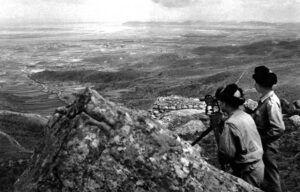
North Korea attacked South Korea on June 25, 1950, igniting the Korean War. Cold War assumptions governed the immediate reaction of US leaders, who instantly concluded that Soviet Premier Joseph Stalin had ordered the invasion as the first step in his plan for world conquest. “Communism,” President Harry S. Truman argued later in his memoirs, “was acting in Korea just as [Adolf] Hitler, [Benito] Mussolini, and the Japanese had acted ten, fifteen, and twenty years earlier.” If North Korea’s aggression went “unchallenged, the world was certain to be plunged into another world war.” This 1930s history lesson prevented Truman from recognizing that the origins of this conflict dated to at least the start of World War II, when Korea was a colony of Japan. Liberation in August 1945 led to division and a predictable war because the US and the Soviet Union would not allow the Korean people to decide their own future.
Before 1941, the US had no vital interests in Korea and was largely indifferent to its fate.
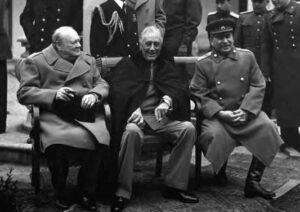
Before 1941, the US had no vital interests in Korea and was largely in- different to its fate. But after Pearl Harbor, President Franklin D. Roosevelt and his advisors acknowledged at once the importance of this strategic peninsula for peace in Asia, advocating a postwar trusteeship to achieve Korea’s independence. Late in 1943, Roosevelt joined British Prime Minister Winston Churchill and Chinese Generalissimo Chiang Kaishek in signing the Cairo Declaration, stating that the Allies “are determined that in due course Korea shall become free and independent.” At the Yalta Conference in early 1945, Stalin endorsed a four-power trusteeship in Korea. When Harry S. Truman became president after Roosevelt’s death in April 1945, however, Soviet expansion in Eastern Europe had begun to alarm US leaders. An atomic attack on Japan, Truman thought, would preempt Soviet entry into the Pacific War and allow unilateral American occupation of Korea. His gamble failed. On August 8, Stalin declared war on Japan and sent the Red Army into Korea. Only Stalin’s acceptance of Truman’s eleventh-hour proposal to divide the peninsula into So- viet and American zones of military occupation at the thirty-eighth parallel saved Korea from unification under Communist rule.
Deterioration of Soviet-American relations in Europe meant that neither side was willing to acquiesce in any agreement in Korea that might strengthen its adversary.
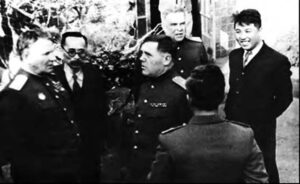
US military occupation of southern Korea began on September 8, 1945. With very little preparation, Washing- ton redeployed the XXIV Corps under the command of Lieutenant General John R. Hodge from Okinawa to Korea. US occupation officials, ignorant of Korea’s history and culture, quickly had trouble maintaining order because al- most all Koreans wanted immediate in- dependence. It did not help that they followed the Japanese model in establishing an authoritarian US military government. Also, American occupation officials relied on wealthy land- lords and businessmen who could speak English for advice. Many of these citizens were former Japanese collaborators and had little interest in ordinary Koreans’ reform demands. Meanwhile, Soviet military forces in northern Korea, after initial acts of rape, looting, and petty crime, implemented policies to win popular support. Working with local people’s committees and indigenous Communists, Soviet officials enacted sweeping political, social, and economic changes. They also expropriated and punished landlords and collaborators, who fled southward and added to rising distress in the US zone. Simultaneously, the Soviets ignored US requests to coordinate occupation policies and allow free traffic across the parallel.
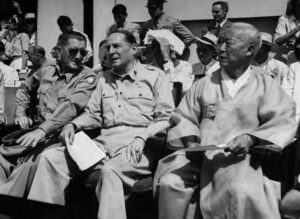
Deterioration of Soviet-American relations in Europe meant that neither side was willing to acquiesce in any agreement in Korea that might strengthen its adversary. This became clear when the US and the Soviet Union tried to implement a revived trusteeship plan after the Moscow Conference in December 1945. Eighteen months of intermittent bilateral negotiations in Korea failed to reach agreement on a representative group of Koreans to form a provisional government, primarily because Moscow refused to consult with anti-Communist politicians opposed to trustee- ship. Meanwhile, political instability and economic deterioration in southern Korea persisted, causing Hodge to urge withdrawal. Postwar US demobilization that brought steady reductions in defense spending fueled pressure for disengagement. In September 1947, the Joint Chiefs of Staff (JCS) added weight to the withdrawal argument when they advised that Korea held no strategic significance. With Communist power growing in China, however, the Truman administration was unwilling to abandon southern Korea precipitously, fearing domestic criticism from Republicans and damage to US credibility abroad.
Seeking an answer to its dilemma, the US referred the Korean dispute to the United Nations, which passed a resolution late in 1947 calling for internationally supervised elections for a government to rule a united Korea. Truman and his advisors knew the Soviets would refuse to cooper- ate. Discarding all hope for early reunification, US policy by then had shifted to creating a separate South Korea, able to defend itself. Bowing to US pressure, the United Nations supervised and certified as valid obviously undemocratic elections in the south alone in May 1948, which resulted in formation of the Republic of Korea (ROK) in August. The Soviet Union responded in kind, sponsoring the creation of the Democratic People’s Re- public of Korea (DPRK) in September. There now were two Koreas, with President Syngman Rhee installing a repressive, dictatorial, and anti-Communist regime in the south, while wartime guerrilla leader Kim Il Sung imposed the totalitarian Stalinist model for political, economic, and social development on the north. A UN resolution then called for Soviet-American withdrawal. In December 1948, the Soviet Union, in response to the DPRK’s request, removed its forces from North Korea.
South Korea’s new government immediately faced violent opposition, climaxing in October 1948 with the Yosu-Sunchon Rebellion. Despite plans to leave the south by the end of 1948, Truman delayed military withdrawal until June 29, 1949. By then, he had approved National Security Council (NSC) Paper 8/2, undertaking a commitment to train, equip, and supply an ROK security force capable of maintaining internal order and deterring a DPRK attack. In spring 1949, US military advisors supervised a dramatic improvement in ROK army fighting abilities. They were so successful that militant South Korean officers began to initiate assaults northward across the thirty-eighth parallel that summer. These attacks ignited major border clashes with North Korean forces. A kind of war was already underway on the peninsula when the conventional phase of Korea’s conflict began on June 25, 1950. Fears that Rhee might initiate an offensive to achieve reunification explain why the Truman administration limited ROK military capabilities, withholding tanks, heavy artillery, and warplanes.
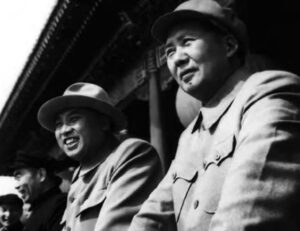
Pursuing qualified containment in Korea, Truman asked Congress for three-year funding of economic aid to the ROK in June 1949. To build sup- port for its approval, on January 12, 1950, Secretary of State Dean G. Ache- son’s speech to the National Press Club depicted an optimistic future for South Korea. Six months later, critics charged that his exclusion of the ROK from the US “defensive perimeter” gave the Communists a “green light” to launch an invasion. However, Soviet documents have established that Acheson’s words had almost no impact on Communist invasion planning. Moreover, by June 1950, the US policy of containment in Korea through economic means appeared to be experiencing marked success. The ROK had acted vigorously to control spiraling inflation, and Rhee’s opponents won legislative control in May elections. As important, the ROK army virtually eliminated guerrilla activities, threatening internal order in South Korea, causing the Truman administration to propose a sizeable military aid increase. Now optimistic about the ROK’s prospects for survival, Washington wanted to deter a conventional attack from the north.
Stalin worried about South Korea’s threat to North Korea’s survival. Throughout 1949, he consistently refused to approve Kim Il Sung’s persistent requests to authorize an attack on the ROK. Communist victory in China in fall 1949 pressured Stalin to show his support for a similar Korean outcome. In January 1950, he and Kim discussed plans for an invasion in Moscow, but the Soviet dictator was not ready to give final consent. How- ever, he did authorize a major expansion of the DPRK’s military capabilities. At an April meeting, Kim Il Sung persuaded Stalin that a military victory would be quick and easy because of southern guerilla support and an anticipated popular uprising against Rhee’s regime. Still fearing US military intervention, Stalin informed Kim that he could invade only if Mao Zedong approved. During May, Kim Il Sung went to Beijing to gain the consent of the People’s Republic of China (PRC). Significantly, Mao also voiced concern that the Americans would defend the ROK but gave his reluctant approval as well. Kim Il Sung’s patrons had joined in approving his reckless decision for war.
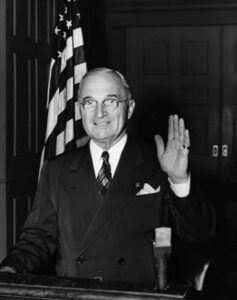
On the morning of June 25, 1950, the Korean People’s Army (KPA) launched its military offensive to conquer South Korea. Rather than immediately committing ground troops, Truman’s first action was to approve referral of the matter to the UN Security Council because he hoped the ROK military could defend itself with primarily indirect US assistance. The UN Security Council’s first resolution called on North Korea to accept a cease- fire and withdraw, but the KPA continued its advance. On June 27, a second resolution requested that member nations provide support for the ROK’s defense. Two days later, Truman, still optimistic that a total commitment was avoidable, agreed in a press conference with a newsman’s description of the conflict as a “police action.” His actions reflected an existing policy that sought to block Communist expansion in Asia without using US military power, thereby avoiding increases in defense spending. But early on June 30, he reluctantly sent US ground troops to Korea after General Douglas MacArthur, US Occupation commander in Japan, advised that failure to do so meant certain Communist destruction of the ROK.
Kim Il Sung’s patrons [Stalin and Mao] had joined in approving his reckless decision for war.
On July 7, 1950, the UN Security Council created the United Nations Command (UNC) and called on Truman to appoint a UNC commander. The president immediately named MacArthur, who was required to submit periodic reports to the United Nations on war developments. The ad- ministration blocked formation of a UN committee that would have direct access to the UNC commander, instead adopting a procedure whereby MacArthur received instructions from and reported to the JCS. Fifteen members joined the US in defending the ROK, but 90 percent of forces were South Korean and American with the US providing weapons, equipment, and logistical support. Despite these American commitments, UNC forces initially suffered a string of defeats. By July 20, the KPA shattered five US battalions as it advanced one hundred miles south of Seoul, the ROK capital. Soon, UNC forces finally stopped the KPA at the Pusan Perimeter, a rectangular area in the southeast corner of the peninsula.
On September 11, 1950, Truman had approved NSC-81, a plan to cross the thirty-eighth parallel and forcibly reunify Korea
Despite the UNC’s desperate situation during July, MacArthur developed plans for a counteroffensive in coordination with an amphibious landing behind enemy lines allowing him to “compose and unite” Korea. State Department officials began to lobby for forcible reunification once the UNC assumed the offensive, arguing that the US should destroy the KPA and hold free elections for a government to rule a united Korea. The JCS had grave doubts about the wisdom of landing at the port of Inchon, twenty miles west of Seoul, because of narrow access, high tides, and sea- walls, but the September 15 operation was a spectacular success. It allowed the US Eighth Army to break out of the Pusan Perimeter and advance north to unite with the X Corps, liberating Seoul two weeks later and sending the KPA scurrying back into North Korea. A month earlier, the administration had abandoned its initial war aim of merely restoring the status quo. On September 11, 1950, Truman had approved NSC-81, a plan to cross the thirty-eighth parallel and forcibly reunify Korea.
Invading the DPRK was an incredible blunder that transformed a three-month war into one lasting three years. US leaders had realized that extension of hostilities risked Soviet or Chinese entry, and therefore, NSC- 81 included the precaution that only Korean units would move into the most northern provinces. On October 2, PRC Foreign Minister Zhou Enlai warned the Indian ambassador that China would intervene in Korea if US forces crossed the parallel, but US officials thought he was bluffing. The UNC offensive began on October 7, after UN passage of a resolution authorizing MacArthur to “ensure conditions of stability throughout Korea.” At a meeting at Wake Island on October 15, MacArthur assured Truman that China would not enter the war, but Mao already had decided to intervene after concluding that Beijing could not tolerate US challenges to its regional credibility. He also wanted to repay the DPRK for sending thou- sands of soldiers to fight in the Chinese civil war. On August 5, Mao instructed his northeastern military district commander to prepare for operations in Korea in the first ten days of September. China’s dictator then muted those associates opposing intervention.
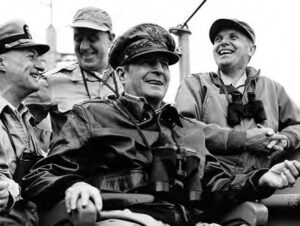
On October 19, units of the Chinese People’s Volunteers (CPV) under the command of General Peng Dehuai crossed the Yalu River. Five days later, MacArthur ordered an offensive to China’s border with US forces in the vanguard. When the JCS questioned this violation of NSC-81, MacArthur replied that he had discussed this action with Truman on Wake Island. Having been wrong in doubting Inchon, the JCS remained silent this time. Nor did MacArthur’s superiors object when he chose to retain a divided command. Even after the first clash between UNC and CPV troops on October 26, the general remained supremely confident. One week later, the Chinese sharply attacked advancing UNC and ROK forces. In response, MacArthur ordered air strikes on Yalu bridges without seeking Washing- ton’s approval. Upon learning this, the JCS prohibited the assaults, pending Truman’s approval. MacArthur then asked that US pilots receive permission for “hot pursuit” of enemy aircraft fleeing into Manchuria. He was infuriated upon learning that the British were advancing a UN proposal to halt the UNC offensive well short of the Yalu to avert war with China, viewing the measure as appeasement.
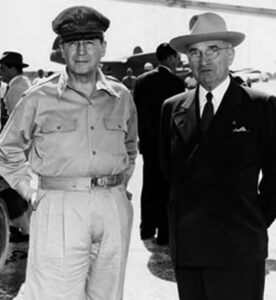
On November 24, MacArthur launched his “Home-by-Christmas Offensive.” The next day, the CPV counterattacked en masse, sending UNC forces into a chaotic retreat southward and causing the Truman administration immediately to consider pursuing a Korean cease-fire. In several public pronouncements, MacArthur blamed setbacks not on himself but on unwise command limitations. In response, Truman approved a directive to US officials that State Department approval was required for any comments about the war. Later that month, MacArthur submitted a four- step “Plan for Victory” to defeat the Communists—a naval blockade of China’s coast, authorization to bombard military installations in Manchuria, deployment of Chiang Kai-shek Nationalist forces in Korea, and launching of an attack on mainland China from Taiwan. The JCS, despite later denials, considered implementing these actions before receiving favorable battlefield reports.
Early in 1951, Lieutenant General Matthew B. Ridgway, new commander of the US Eighth Army, halted the Communist southern advance. Soon, UNC counterattacks restored battle lines north of the thirty-eighth parallel. In March, MacArthur, frustrated by Washington’s refusal to escalate the war, issued a demand for immediate surrender to the Communists that sabotaged a planned cease-fire initiative. Truman reprimanded but did not recall the general. On April 5, House Republican Minority Leader Joseph W. Martin Jr. read MacArthur’s letter in Congress, once again criticizing the administration’s efforts to limit the war. Truman later argued that this was the “last straw.” On April 11, with the unanimous support of top advisors, the president fired MacArthur, justifying his action as a defense of the constitutional principle of civilian control over the military, but another consideration may have exerted even greater influence on Truman. The JCS had been monitoring a Communist military buildup in East Asia and thought a trusted UNC commander should have standing authority to retaliate against Soviet or Chinese escalation, including the use of nuclear weapons that they had deployed to forward Pacific bases. Truman and his advisors, as well as US allies, distrusted MacArthur, fearing that he might provoke an incident to widen the war.
MacArthur’s recall ignited a firestorm of public criticism against both Truman and the war. The general returned to tickertape parades and, on April 19, 1951, he delivered a televised address before a joint session of Congress, defending his actions and making this now-famous assertion: “In war there is no substitute for victory.” During Senate joint committee hearings on his firing in May, MacArthur denied that he was guilty of in- subordination. General Omar N. Bradley, the JCS chair, made the administration’s case, arguing that enacting MacArthur’s proposals would lead to “the wrong war, at the wrong place, at the wrong time, and with the wrong enemy.” Meanwhile, in April, the Communists launched the first of two major offensives in a final effort to force the UNC off the peninsula. When May ended, the CPV and KPA had suffered huge losses, and a UNC counteroffensive then restored the front north of the parallel, persuading Beijing and Pyongyang, as was already the case in Washington, that pursuit of a cease-fire was necessary. The belligerents agreed to open truce negotiations on July 10 at Kaesong, a neutral site that the Communists deceitfully occupied on the eve of the first session.
North Korea and China created an acrimonious atmosphere with at- tempts at the outset to score propaganda points, but the UNC raised the first major roadblock with its proposal for a demilitarized zone extending deep into North Korea. More important, after the talks moved to Panmunjom in October, there was rapid progress in resolving almost all is- sues, including establishment of a demilitarized zone along the battle lines, truce enforcement inspection procedures, and a postwar political conference to discuss withdrawal of foreign troops and reunification. An armistice could have been concluded ten months after talks began had the negotiators not deadlocked over the disposition of prisoners of war (POWs). Rejecting the UNC proposal for non-forcible repatriation, the Communists demanded adherence to the Geneva Convention that required return of all POWs. Beijing and Pyongyang were guilty of hypocrisy regarding this matter because they were subjecting UNC prisoners to unspeakable mistreatment and indoctrination.
On April 11, with the unanimous support of top advisors, the presi- dent fired MacArthur.
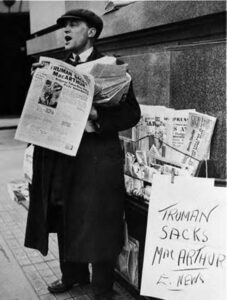
Truman ordered that the UNC delegation assume an inflexible stand against returning Communist prisoners to China and North Korea against their will. “We will not buy an armistice,” he insisted, “by turning over human beings for slaughter or slavery.” Although Truman unquestionably believed in the moral rightness of his position, he was not unaware of the propaganda value derived from Communist prisoners defecting to the “free world.” His advisors, however, withheld evidence from him that contradicted this assessment. A vast majority of North Korean POWs were actually South Koreans who either joined voluntarily or were impressed into the KPA. Thousands of Chinese POWs were Nationalist soldiers trapped in China at the end of the civil war, who now had the chance to escape to Taiwan. Chinese Nationalist guards at UNC POW camps used terrorist “re-education” tactics to compel prisoners to refuse repatriation; resisters risked beatings or death, and repatriates were even tattooed with anti- Communist slogans.
In November 1952, angry Americans elected Dwight D. Eisenhower president, in large part because they expected him to end what had be- come the very unpopular “Mr. Truman’s War.” Fulfilling a campaign pledge, the former general visited Korea early in December, concluding that further ground attacks would be futile. Simultaneously, the UN General Assembly called for a neutral commission to resolve the dispute over POW repatriation. Instead of embracing the plan, Eisenhower, after taking office in January 1953, seriously considered threatening a nuclear attack on China to force a settlement. Signaling his new resolve, Eisenhower announced on February 2 that he was ordering removal of the US Seventh Fleet from the Taiwan Strait, implying endorsement for a Nationalist assault on the mainland. What influenced China more was the devastating impact of the war. By summer 1952, the PRC faced huge domestic economic problems and likely decided to make peace once Truman left office. Major food shortages and physical devastation persuaded Pyongyang to favor an armistice even earlier.
An armistice ended fighting in Korea on July 27, 1953.
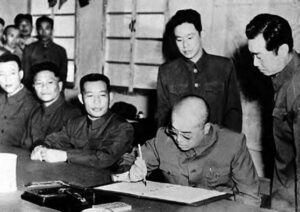
Early in 1953, China and North Korea were prepared to resume the truce negotiations, but the Communists preferred that the Americans make the first move. That came on February 22 when the UNC, repeating a Red Cross proposal, suggested exchanging sick and wounded prisoners. At this key moment, Stalin died on March 5. Rather than dissuading the PRC and the DPRK as Stalin had done, his successors encouraged them to act on their desire for peace. On March 28, the Communist side accepted the UNC proposal. Two days later, Zhou Enlai publicly proposed transfer of prisoners rejecting repatriation to a neutral state. On April 20, Operation Little Switch, the exchange of sick and wounded prisoners, began, and six days later, negotiations resumed at Panmunjom. Sharp disagreement followed over the final details of the truce agreement. Eisenhower insisted later that the PRC accepted US terms after Secretary of State John Foster Dulles informed India’s prime minister in May that without progress toward a truce, the US would terminate the existing limitations on its conduct of the war. No documentary evidence has of yet surfaced to support his assertion.
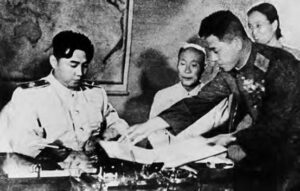
Also, by early 1953, both Washington and Beijing clearly wanted an armistice, having tired of the economic burdens, military losses, political and military constraints, worries about an expanded war, and pressure from allies and the world community to end the stalemated conflict. A steady stream of wartime issues threatened to inflict irrevocable damage on US relations with its allies in Western Europe and nonaligned members of the United Nations. Indeed, in May 1953, US bombing of North Korea’s dams and irrigation system ignited an outburst of world criticism. Later that month and early in June, the CPV staged powerful attacks against ROK defensive positions. Far from being intimidated, Beijing thus displayed its continuing resolve, using military means to persuade its adversary to make concessions on the final terms. Before the belligerents could sign the agreement, Rhee tried to torpedo the impending truce when he released 27,000 North Korean POWs. Eisenhower bought Rhee’s acceptance of a cease-fire with pledges of financial aid and a mutual security pact.
An armistice ended fighting in Korea on July 27, 1953. Since then, Koreans have seen the war as the second-greatest tragedy in their recent history after Japanese colonial rule. Not only did it cause devastation and three million deaths, it also confirmed the division of a homogeneous society after thirteen centuries of unity, while permanently separating millions of families. Meanwhile, US wartime spending jump-started Japan’s economy, which led to its emergence as a global power. Koreans instead had to endure the living tragedy of yearning for reunification, as diplomatic tension and military clashes along the demilitarized zone continued into the twenty-first century.
Korea’s war also dramatically reshaped world affairs. In response, US leaders vastly increased defense spending, strengthened the North Atlantic Treaty Organization militarily, and pressed for rearming West Germany. In Asia, the conflict saved Chiang’s regime on Taiwan, while making South Korea a long-term client of the US. US relations with China were poisoned for twenty years, especially after Washington persuaded the United Nations to condemn the PRC for aggression in Korea. Ironically, the war helped Mao’s regime consolidate its control in China, while elevating its regional prestige. In response, US leaders, acting on what they saw as Korea’s primary lesson, relied on military means to meet the challenge, with disastrous results in Việt Nam.
Share this:
- Click to share on LinkedIn (Opens in new window)
- Click to share on Facebook (Opens in new window)
- Click to share on Twitter (Opens in new window)
- Click to share on Pinterest (Opens in new window)
SUGGESTED RESOURCES
Kaufman, Burton I. The Korean Conflict . Westport, CT: Greenwood, 1999.
“Korea: Lessons of the Forgotten War.” YouTube video, 2:20, posted by KRT Productions Inc., 2000. http://www.youtube.com/watch?v=fi31OoQfD7U.
Lee, Steven Hugh. The Korean War. New York: Longman, 2001.
Matray, James I. “Korea’s War at Sixty: A Survey of the Literature.” Cold War History 11, no. 1 (February 2011): 99–129.
US Department of Defense. Korea 1950–1953, accessed July 9, 2012, http://koreanwar.defense.gov/index.html.
- Latest News
- Join or Renew
- Education About Asia
- Education About Asia Articles
- Asia Shorts Book Series
- Asia Past & Present
- Key Issues in Asian Studies
- Journal of Asian Studies
- The Bibliography of Asian Studies
- AAS-Gale Fellowship
- Council Grants
- Book Prizes
- Graduate Student Paper Prizes
- Distinguished Contributions to Asian Studies Award
- First Book Subvention Program
- External Grants & Fellowships
- AAS Career Center
- Asian Studies Programs & Centers
- Study Abroad Programs
- Language Database
- Conferences & Events
- #AsiaNow Blog
- Share full article
Advertisement
Supported by
Korean War, a ‘Forgotten’ Conflict That Shaped the Modern World

By Liam Stack
- Jan. 1, 2018
The Korean War has been called “the Forgotten War” in the United States, where coverage of the 1950s conflict was censored and its memory decades later is often overshadowed by World War II and the Vietnam War.
But the three-year conflict in Korea, which pitted communist and capitalist forces against each other, set the stage for decades of tension among North Korea, South Korea and the United States.
It also helped set the tone for Soviet-American rivalry during the Cold War, profoundly shaping the world we live in today, historians said.
As tensions between North Korea and the United States continue to mount amid missile tests and taunts, here is a brief guide to the Korean War and the impacts that linger more than 60 years after its end.
How did the Korean War start?
The Korean War began when North Korean troops pushed into South Korea on June 25, 1950, and it lasted until 1953. But experts said the military conflict could not be properly understood without considering its historical context.
We are having trouble retrieving the article content.
Please enable JavaScript in your browser settings.
Thank you for your patience while we verify access. If you are in Reader mode please exit and log into your Times account, or subscribe for all of The Times.
Thank you for your patience while we verify access.
Already a subscriber? Log in .
Want all of The Times? Subscribe .
- Battle Of The Hook - Korean War
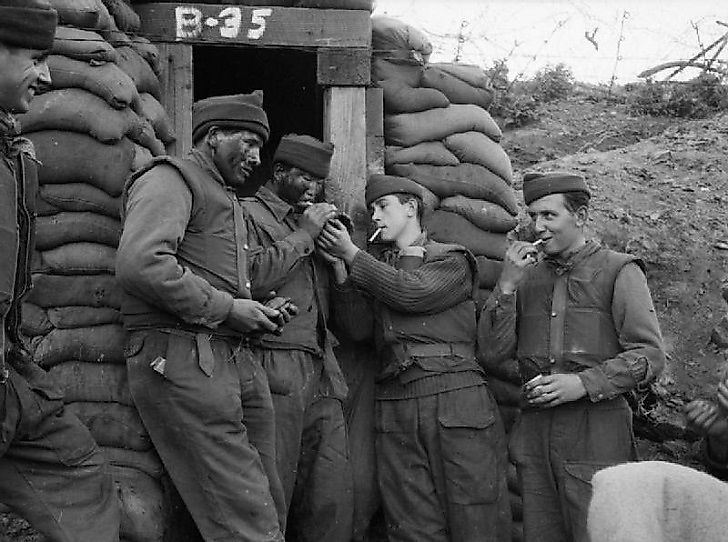
5. Background
The Battle of the Hook was an engagement in the Korean War. The battle there started on the 28th of May, 1953, and continued into the 29th of May. It is named for a crescent-shaped ridge involved in the battle, called ‘The Hook’ near Sami Creek, outside of Kaesong, which served as the capital of the Korean Kingdoms of the Taebong and Goryeo periods. ‘The Hook’ was of crucial importance because it was a tactical staging ground for any assault on nearby Yong Dong, which would have to be captured for forces to carry out an invasion of Seoul, the capital of South Korea . However, even without a subsequent assault into Seoul, having ‘The Hook’ under their control would give the Chinese and North Koreans tremendous bargaining power in the event of a ceasefire and negotiations that were on the horizon.
Defending ‘The Hook’ for the United Nations were the men of the Duke of Wellington’s Regiment’s 1st Battalion. With a strength of 1,500, the ‘Dukes’, as they were known, had arrived at the site less than two weeks prior. It was comprised largely of National Servicemen. Commanding the Dukes was Brigadier Joseph Kendrew of the 29th Infantry Brigade. The Dukes were supported by the 1st Corps of the US Army and other British forces for artillery cover, as well as aid from Turkish personnel. It is uncertain which Chinese units exactly were involved in the assault, and subsequently information about the Chinese commanders is unavailable. It is known, however, that they did in fact number in excess of 6,500 men from infantry and artillery units, greatly outnumbering the Brits.
3. Description
The British and American artillery employed 155-millimeter, 8-inch, and 240-millimeter shells, as well as an assortment of rockets in the fight. In all, 37,818 artillery shells and 325 rockets were fired. The 1st Royal tank Regiment’s Centurion tanks from C Squadron also fired 504 20-pounder shells, and 22,500 machine gun rounds. The Chinese artillery fired about 11,000 shells over the course of one day, including over 200 fired within one hour on the evening of the 28th. The Chinese employed the classic tactic of saturating the desired ground with artillery fire, then sending waves of infantry to swarm the area and attempt to clear the trenches. Outnumbered more than four to one, the Dukes still had an advantage, in that they held the high ground in the area. Conversely, the Chinese forces had to leave the safety of their own trenches to try and capture ‘The Hook’, and suffered terrible casualties as a result. However, after these initial assaults, the Dukes launched a counterattack on the Chinese trenches. Because they had already suffered major losses in their own assaults, the Chinese were unable to repel the Dukes, and were themselves flushed out.
The Dukes were successful in repelling the waves of Chinese attacks and held The Hook as they were tasked. An essential element of their success was the ferocious shelling that decimated the Chinese forces even before they could mount their attacks. The overwhelming desire by the Chinese to capture The Hook caused them to commit, and lose, unreasonable numbers of troops into the ultimately unsuccessful charges against the British trenches. Due to their heavy casualties from this tactic, they were unable to hold their own reserve positions upon the counterattack. The situation report after the battle summed up the starkly different prices the opposing sides paid. The Dukes had 24 men killed and 20 missing, with 105 soldiers wounded, while the Chinese lost in excess of 1,000 men and had 800 wounded. For every British soldier killed, between 40 and 50 Chinese soldiers lost their lives.
1. Significance
The successful defense by the Dukes at the Battle of ‘The Hook’ allowed the United Nations' (UN) alliance, including the Americans and British, to retain a strong bargaining position at the armistice talks that were to follow. However, this was just a single instance of an assault on The Hook by the Communist forces. In all, four major campaigns were launched to wrest control of this small area that was of such critical strategic significance. None were successful, and it is widely regarded that the failure to capture The Hook dissuaded the Chinese and North Koreans from attempting a major attack on Seoul later on.
Following the battle, Brigadier Kendrew was quoted as stating, "My God those Dukes were marvelous. In the whole of the last war I never saw anything like that bombardment. But they held the Hook, as I knew they would." This Korean War battle was one of the few involving Turkish soldiers in the war.
More in Society

Alan Watts' Guide To The Meaning Of Life

Did Nietzsche Believe In Free Will?
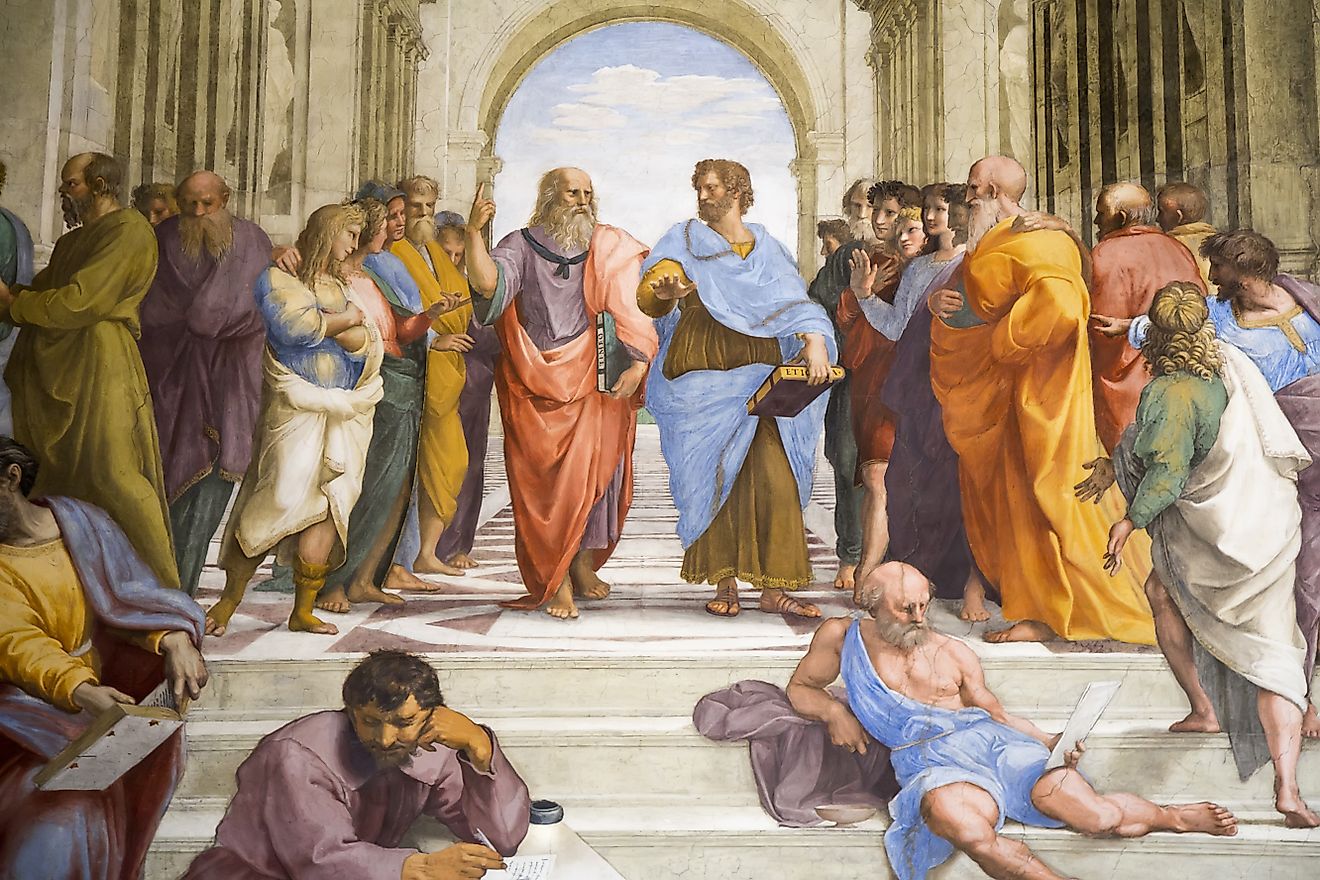
Is Metaphysics The Study Of Philosophy Or Science?
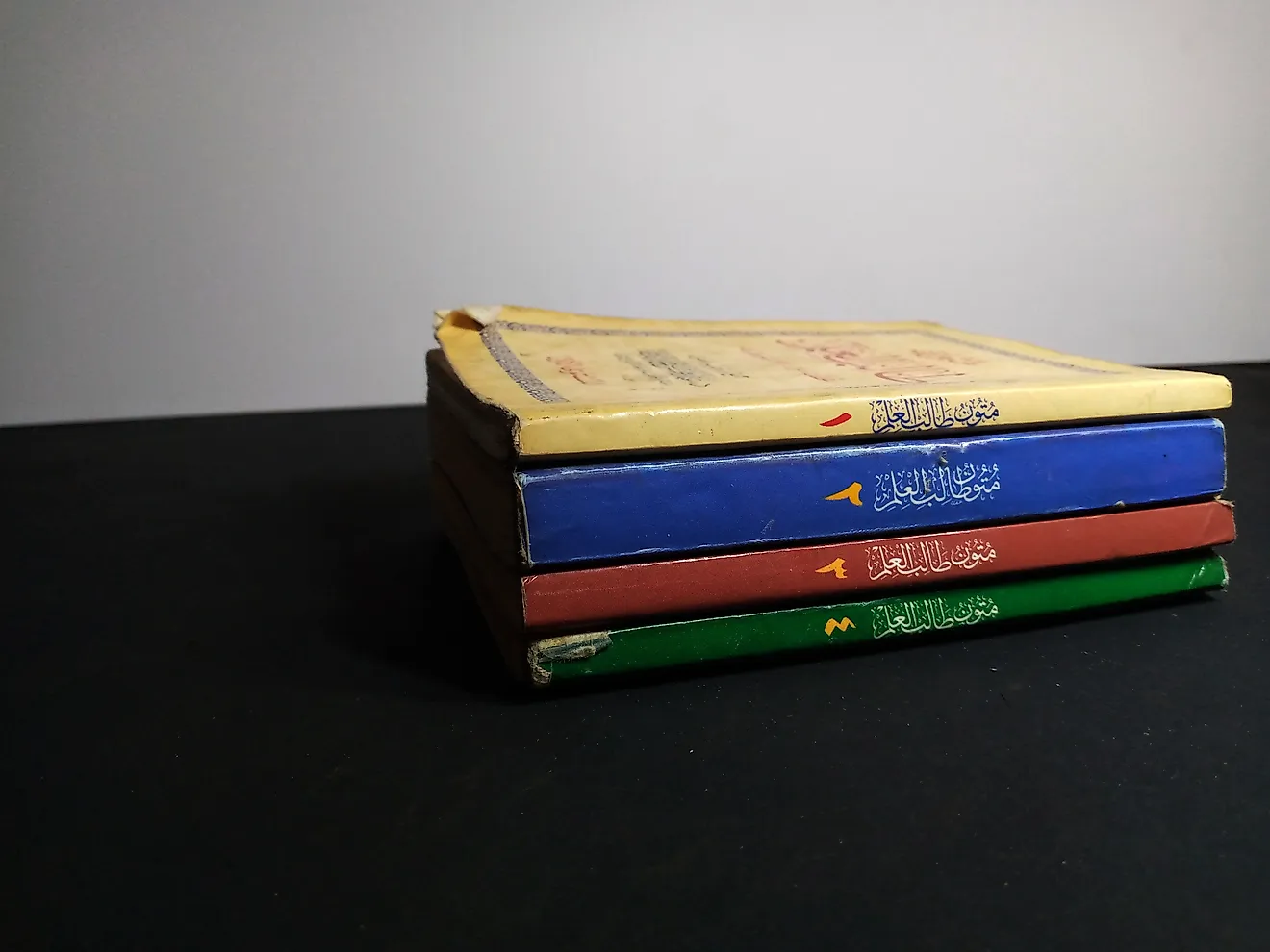
5 Islamic Scientific Ideas That Changed The World

The Most Popular Sports in the United States
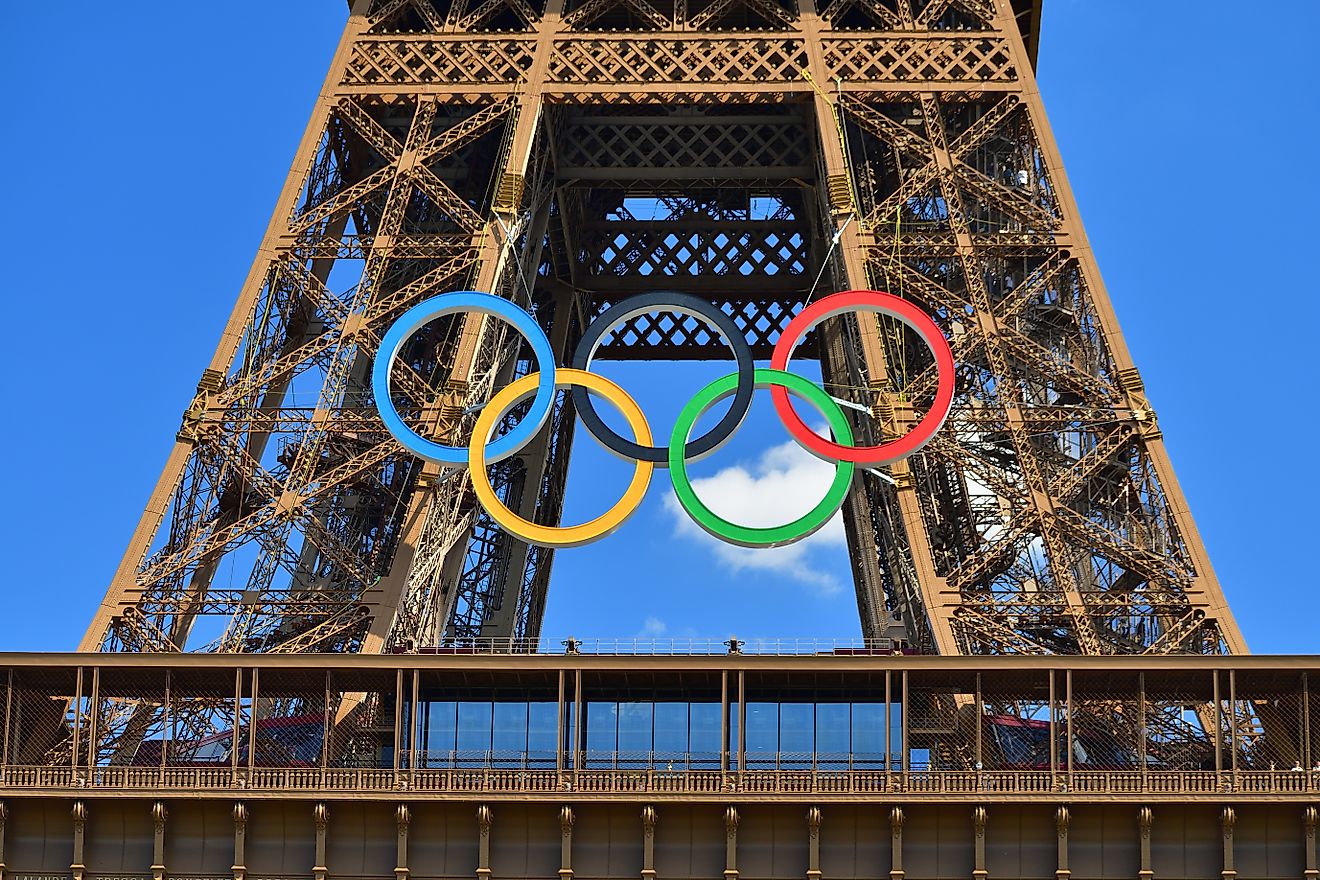
How Many Countries Compete in the Olympics?
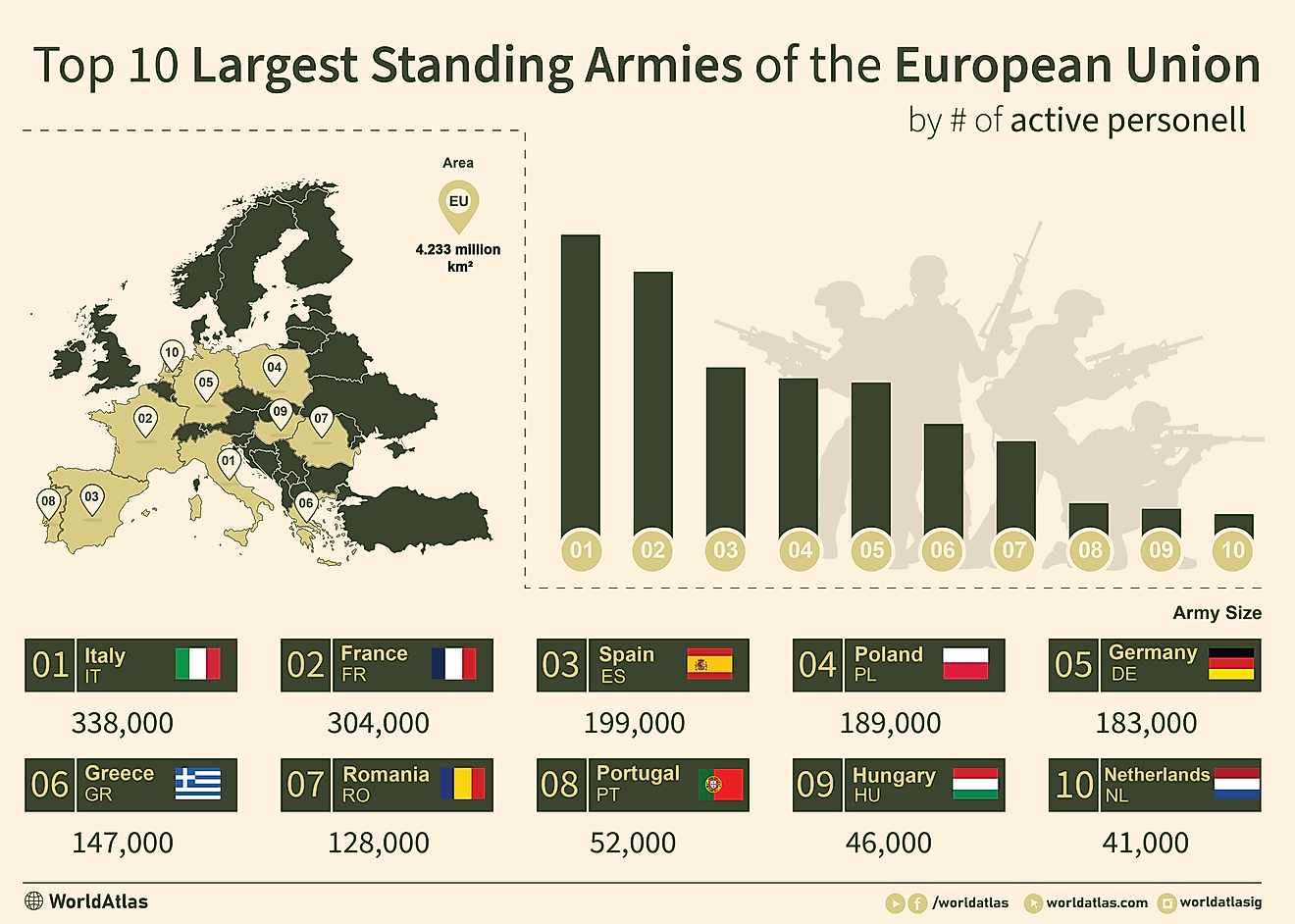
The Largest Standing Armies of the European Union
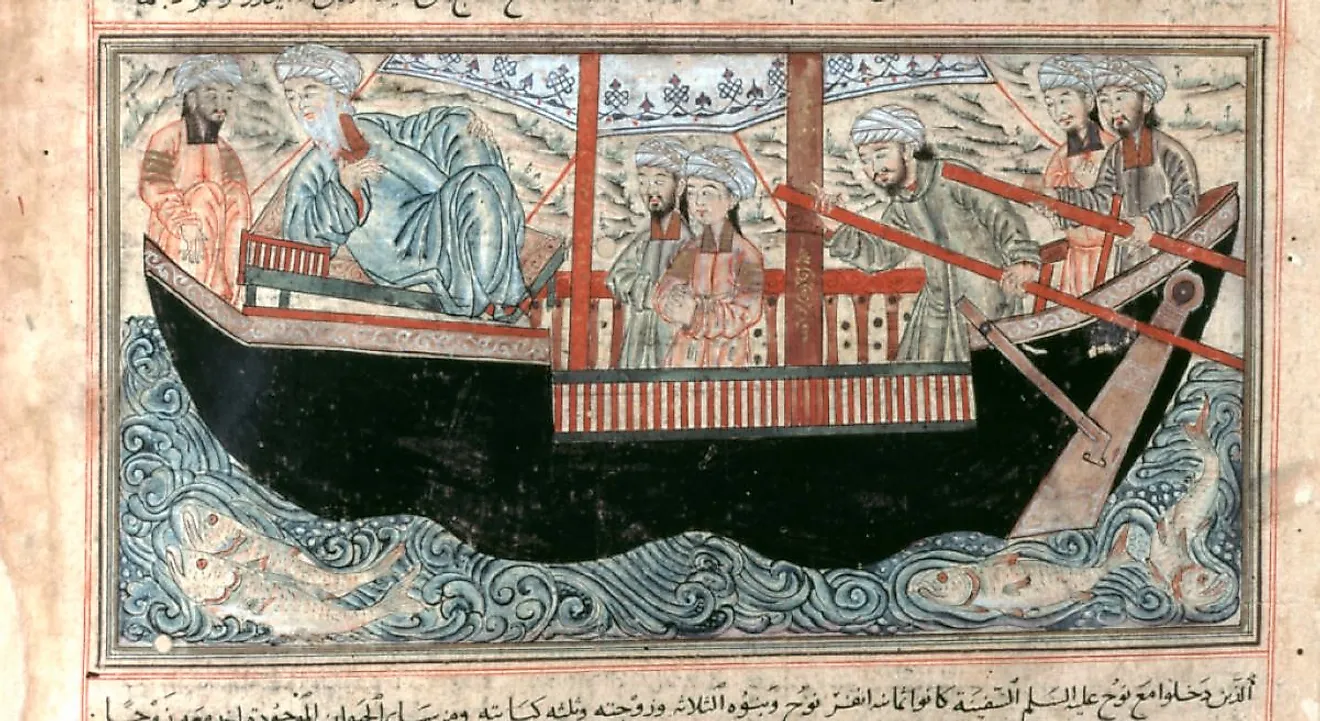
The Most Influential Islamic Philosophers
Prologue Magazine

Revisiting Korea
Exposing myths of the forgotten war.
Summer 2002, Vol. 34, No. 2
By James I. Matray
© 20002 By James I. Matray
"A myth is an account that is demonstrably untrue in whole or substantial part." —Thomas A. Bailey
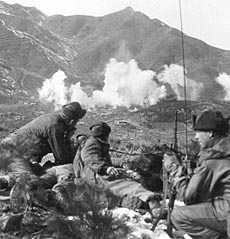
An artillery officer directs UN troops as they drop white phosphorous on a Communist-held post in February 1951. (NARA, 111-SC-358293)
For many years, the Korean War attracted little attention from either American diplomatic historians or the general public. Clay Blair even titled his detailed study of the Korean conflict The Forgotten War . Other authors have labeled Korea The War Before Vietnam and The Unknown War . 1 That the Korean War avoided scholarly examination for so long resulted in the emergence of a number of myths about the conflict that remain central to Korea's place in popular memory almost a half century after the fighting stopped.
The Korean War Memorial in Washington, D.C., presents in granite what for many remains its most powerful lesson— that "Freedom Is Not Free." Tourists can buy T-shirts sporting a map of Korea over which appears the judgment that this was "The Place Where Communism Was Stopped." But since 1981 a swelling stream of books and articles reexamining not only the war itself, but U.S. policy toward Korea before June 1950, has shattered traditional beliefs about the conflict. 2 This essay revisits the Korean War with the purpose of exposing old myths and replacing them with current realities of a no-longer-forgotten conflict.
Early accounts of the Korean War almost without exception focused on events beginning with the North Korean invasion of South Korea. This was because few people doubted that the Soviet Union had ordered the attack as part of its plan for global conquest. President Harry S. Truman provided support for this assumption just two days after the start of hostilities. On June 27, 1950, he told the American people that North Korea's attack on South Korea showed the world that "communism has passed beyond the use of subversion to conquer independent nations and will now use armed invasion and war." 3 This assessment reflected Truman's firm belief that North Korea was a puppet of the Soviet Union and Kim Il Sung was acting on instructions from Moscow. In his memoirs, Truman equated Joseph Stalin's actions with Adolf Hitler's in the 1930s, arguing that military intervention to defend the Republic of Korea (ROK) was vital because appeasement had not prevented but ensured the outbreak of World War II. 4 Top administration officials, as well as the general public, fully shared these assumptions. This traditional interpretation provided the analytical foundation for early accounts of the war, perpetuating the most important myth of the Korean conflict. 5
A consensus now prevails that the origins of the Korean War date from at least World War II. Rather than characterizing the conflict as the product of external aggression, scholars acknowledge the centrality of domestic factors. In fact, more than a decade ago, it became fashionable to portray the Korean War as a civil conflict, rejecting not only the argument that it was an example of Soviet-inspired, external aggression but denying Moscow's involvement. Bruce Cumings, the leading proponent of this interpretation, insisted in his two-volume study titled The Origins of the Korean War that a conventional war started in Korea in June 1950 because the United States prevented a leftist revolution on the peninsula during 1945 and imposed a reactionary regime in the south during the years immediately following World War II. 6 Accounts of the war thereafter adopted the Cumings interpretation. Callum MacDonald wrote that the North Korean "attack was the latest act in a civil war which had been taking shape since the liberation of Korea from Japan in 1945." Burton I. Kaufman labeled the conflict "a true civil war." For Peter Lowe, by 1950, the "situation in the Korean peninsula was in essence one of civil war." John Merrill charged that prior accounts of the Korean War ignored the "local setting," insisting that "the war can be usefully interpreted as a case of intervention in the ongoing civil strife in the South." 7
Release of previously classified Soviet and Chinese documents during the 1990s abruptly ended the emerging consensus that Korea was a classic civil war. A renewed emphasis on international factors in reexaminations of the Korean conflict resulted in the current description of it as an "international civil war," which only sounds like an oxymoron. Kathryn Weathersby provided a succinct summary of this new consensus when she concluded that the war's origins "lie primarily with the division of Korea in 1945 and the polarization of Korean politics that resulted from . . . the policies of the two occupying powers. . . . The Soviet Union played a key role in the outbreak of the war, but it was as facilitator, not as originator." 8 Many writers already had arrived at this conclusion before Communist archival materials became available in the course of reexamining U.S. policy toward Korea in World War II. For example, some scholars emphasized international factors in reexamining how Korea came to be divided in 1945. A myth had taken hold during the McCarthy era that just as Communists in the State Department had helped Mao Zedong seize power in China, so too had they conspired to ensure Soviet control in North Korea. Korea's partition at the thirty-eighth parallel allegedly was part of the price President Franklin D. Roosevelt paid at Yalta for Soviet entry in the Pacific War. This coexisted with another erroneous belief that the Allies divided Korea at the Potsdam Conference. 9
We now know that President Harry S. Truman proposed partitioning Korea on the eve of Japan's surrender to prevent the Soviets from occupying the entire peninsula. When he became President following Roosevelt's death in April 1945, Soviet expansion into Eastern Europe had begun to alarm U.S. leaders. Almost from the outset, the new President expected Soviet actions in Korea to parallel Stalin's policies in Poland. Within a week after assuming office, Truman began to search for some way to eliminate any opportunity for a repetition of Soviet expansion. The atomic bomb seemed to provide him with an easy answer. Japan's prompt surrender after an atomic attack would preempt Soviet entrance into the Pacific war, thereby permitting the United States to occupy Korea alone and removing any possibility for "sovietization." But Truman's gamble failed. When Stalin declared war on Japan and sent the Red Army into Korea prematurely on August 12, 1945, the United States proposed Korea's division into Soviet and U.S. zones of military occupation at the thirty-eighth parallel. Only Stalin's acceptance of this desperate eleventh-hour plan saved the peninsula from unification under Communist rule. Accepting Korea's division into suitable spheres of influence, the Soviet leader probably also hoped to trade this concession for an equal voice in occupied Japan. 10
Korea soon found itself a captive of the Cold War. As Soviet-American relations in Europe deteriorated, neither side was willing to acquiesce to an agreement appreciably strengthening its adversary. After eighteen months of failed negotiations, Washington and Moscow moved toward the formation of separate regimes, resulting in the creation in August 1948 of the Republic of Korea in the south and the Democratic People's Republic of Korea (DPRK) in the north the following September. 11 After North Korea launched its attack two years later, a myth took hold that the United States abandoned the ROK, thereby encouraging an invasion.
Admittedly, in September 1947 the Joint Chiefs of Staff (JCS) had recommended prompt U.S. military withdrawal from Korea, but a major uprising against the government of Syngman Rhee in October 1948 caused the United States to postpone disengagement until June 29, 1949. By then, Truman believed that South Korea could survive and even prosper without protection from U.S. troops despite the existence of a powerful army in North Korea. Before U.S. troops left, the administration had assumed a commitment to train, equip, and supply a security force in the south that was capable of preserving internal order and deterring an attack from the north. Also, it had asked Congress to approve a three-year program of technical and economic assistance. 12
To build political support for the Korean assistance package, Secretary of State Dean G. Acheson delivered a speech before the National Press Club on January 12, 1950, offering an optimistic assessment of the ROK's future. Later, critics perpetrated the myth that Acheson's exclusion of South Korea from the US"defensive perimeter" gave the Kremlin a "green light" to order an attack. 13 Currently available declassified Soviet documents show, however, that Acheson's words had almost no effect on Communist planning for the invasion; only one even mentions the Press Club speech. In fact, North Korean leader Kim IL Sung at first thought that Acheson had placed South Korea inside the U.S. defensive perimeter. 14
More important was the correct assumption guiding Truman's Korea policy that Moscow was reluctant to allow the North Koreans to practice open aggression. This belief allowed the administration to pursue containment through economic means, and the policy seemed to be experiencing marked success in Korea during the weeks after Acheson's address. South Korea had acted vigorously to end spiraling inflation, while elections in May had given Rhee's critics control of the legislature. Finally, the South Korean army had nearly eliminated guerrilla activities threatening internal order, prompting approval of a large increase in U.S. military aid. 15
While the United States was willing to be patient, awaiting the collapse of what it saw as Moscow's artificial client state in North Korea, South Korea's President Rhee was obsessed with accomplishing early reunification through military means. The Truman administration's fear that Rhee would launch an invasion prompted it to limit South Korea's military capabilities, refusing to provide tanks, heavy artillery, and combat planes. 16 This did not stop the South Koreans from initiating most of the border clashes with North Korean forces at the thirty-eighth parallel beginning in the summer of 1948 and reaching a high level of intensity and violence a year later. Historians now acknowledge that the two Koreas already were waging a civil conflict when North Korea's attack opened the conventional phase of the war. 17 Contradicting traditional assumptions, however, available declassified Soviet documents demonstrate that throughout 1949 Stalin consistently refused to approve Kim IL Sung's persistent requests to approve an invasion of South Korea. The Soviet leader believed that North Korea had not achieved either military superiority north of the parallel or political strength south of that line. His main concern was the threat South Korea posed to North Korea's survival, for example fearing an invasion northward following U.S. military withdrawal in June 1949. 18
Stalin was not prepared to risk war with the United States in 1949, but the Communist victory in China that fall placed pressure on him to show his support for the same outcome in Korea. Both of these factors allowed Kim IL Sung to use the "strategy he later used so extensively of playing China and the Soviet Union against one another." 19 In January 1950, Stalin approved Kim's request to visit Moscow but, despite Acheson's speech, he was not ready to approve an invasion. At that time, he also approved a major expansion of North Korea's military capabilities, but his purpose was more to ensure its survival than to promote aggressive expansion. When they met during April, Kim persuaded Stalin that a military victory would be quick and easy, especially because of support from southern guerrillas and an expected popular uprising against Rhee. But Stalin still feared U.S. military intervention, advising Kim that he could stage an offensive only if China's Mao Zedong approved. During May, Kim IL Sung traveled to Beijing to secure Chinese consent for the invasion. Significantly, Mao also expressed concerns about U.S. military intervention. But after Kim disingenuously explained that Stalin had approved his plans, Mao gave his reluctant consent for the offensive as well. Kim IL Sung knew that time was running out and manipulated his patrons into supporting his desperate bid for reunification before Rhee could beat him to the punch. 20
Few Americans then and thereafter doubted for a moment that on June 25, 1950, North Korea attacked South Korea on orders from Moscow. They also came to believe a myth that President Truman acted with swiftness and courage to prevent conquest of the entire peninsula. But in fact, he did not commit U.S. ground troops in Korea for almost a week, referring the matter instead to the United Nations and banking on South Korea's ability to defend itself. This was consistent with Truman's containment policy in Asia, where he hoped to prevent Communist expansion without relying on U.S. military power, thereby avoiding the need to reverse his policy of reducing defense spending. At a press conference on June 29, he was still optimistic that a total commitment was avoidable, agreeing with a newsman's description of the war as a "police action" rather than coining the phrase himself. But the next morning, Gen. Douglas MacArthur advised that without American combat forces, Communist conquest of South Korea was certain. Even then, however, Truman hesitated, asking Secretary of the Army Frank Pace, who telephoned before dawn requesting approval of MacArthur's request, "Do we have to decide tonight?" Told that a decision could not wait, the President sent U.S. soldiers to fight in Korea. 21
Truman made much at the time of how the United States intervened in Korea in response to the request for defense of the Republic of Korea from the Security Council of the United Nations. But the myth that the Korean War was an example of collective security lost its credibility long ago, given the reality that the United States acted prior to passage of UN resolutions. The UN Security Council resolution of July 7, 1950, provided for creation of a United Nations Command (UNC), requiring MacArthur, Truman's choice as the UNC commander, to make periodic reports on developments in the war. The Truman administration had blocked formation of a UN committee that would have had direct access to the UNC, adopting instead a procedure whereby MacArthur received instructions from and reported to the Joint Chiefs of Staff (JCS). Since Washington had to approve them, MacArthur's reports in fact were after-action summaries of information that was common knowledge because newspapers already had printed detailed coverage of the same developments. Moreover, the United States and the ROK contributed 90 percent of the manpower. It was not the United Nations, but the United States that provided the weapons, equipment, and logistical support to save South Korea. All this provided clear proof of the nominal role that the United Nations, and collective security, played in the Korean War. 22
MacArthur's Inchon landing reversed the course of the Korean War, but contrary to traditional beliefs, it did not create the momentum that resulted in the decision to cross the thirty-eighth parallel and continue the offensive to the Yalu. In fact, throughout July, Truman's advisers, certain that a battlefield victory was inevitable, debated whether to pursue forcible reunification once North Korea's army had been thrown out of the south. Initially, Acheson opposed crossing the parallel, stating publicly on June 29 that U.S. military action is "solely for the purpose of restoring [South Korea] to its status prior to the invasion." However, State Department officials worked to change Acheson's mind, arguing persuasively that the United States should destroy the North Korean army and then sponsor free elections for a government to rule all of Korea. U.S. military leaders were reluctant to endorse this drastic change in war aims until, in late July, UN defensive lines finally stabilized. Roughly two weeks later, Truman decided to approve military operations in pursuit of forcible reunification. Truman's plan for conquering North Korea, which he approved on September 1, included precautions to minimize the chance of Chinese intervention that MacArthur later ignored. But the allegation that MacArthur was responsible for the ill-advised advance into North Korea is a myth. Truman made this decision to register a victory in the Cold War. 23
China's decision to intervene in the Korean War has received a thorough reexamination in recent years as a consequence of access to new documents and personal accounts on the Communist side. Chen Jian has demonstrated that Beijing's "entry into the Korean War was determined by concerns much more complicated than safeguarding the Chinese-Korean border." Mao Zedong sought "to win a glorious victory" that would restore China's world status as the "Central Kingdom." He also wanted to repay a debt to North Korea, which had sent thousands of soldiers to fight in the Chinese civil war. Furthermore, after the Inchon landing, Stalin also had been pressing Beijing to intervene and prevent US conquest of North Korea. His pledge of Soviet air support removed any remaining doubts that Mao might have had about crossing the Yalu. But his associates hesitated, causing Mao, Chen explains, to use his "wisdom and authority to persuade his comrades" that US conquest of North Korea would inflict an intolerable blow on revolutionary nationalism in Asia. 24
After Stalin reneged on his promise of air support early in October, some writers have argued that China balked, but then intervened to avoid the prospect of Kim Il Sung establishing a government in exile in Manchuria. 25 Chen insists, however, that because the triumph of Mao's revolutionary nationalist program was so vital to "the new China's . . . domestic and international interests, there was little possibility that China's entrance into the Korean War could have been averted." 26
Recent research has contributed to a modest rehabilitation of MacArthur on other issues, most notably the general's persistent efforts to escalate the Korean War. After China's massive military assault in late November 1950, MacArthur submitted a "Plan for Victory" that proposed four specific steps to defeat the Communists. First, the general called for a blockade of China's coast. Second, he wanted authorization to bomb military installations in Manchuria. Third, MacArthur advocated deployment of Chinese Nationalist forces in Korea. Finally, he recommended that Jiang Jieshi launch an attack from Taiwan against the mainland. 27 We now know that the Joint Chiefs of Staff, despite later denials, seriously considered endorsing implementation of these actions prior to receiving favorable reports from the battlefront late in December. By spring 1951, Truman had approved the first two proposals if UN forces faced annihilation or China expanded the war beyond Korea. In fact, the President even was prepared to use atomic weapons, an option that he had under consideration since the early days of the fighting. According to some historians, the United States was closer to using nuclear weapons in Korea under Truman than under his successor Dwight D. Eisenhower. 28
A surprising pattern in recent writing on the Korean War has been the indifference to the role of MacArthur. Nevertheless, scholars have clarified events surrounding Truman's decision to recall the general in April 1951. Early in 1951, Gen. Matthew B. Ridgway halted the Chinese Communist advance southward, making it possible for the administration to implement its preference for fighting a limited war in Korea. After Washington turned down successive pleas from MacArthur to expand the war through attacking China, the general grew frustrated with a policy of settling for an armistice near the thirty-eighth parallel. In March, his demand for an immediate Communist surrender sabotaged a planned cease-fire initiative. But for various reasons, many of them political, Truman reprimanded, but did not recall the general. By early April, a combination of factors forced the President to act. The JCS worried about a Chinese and Soviet military buildup in East Asia and thought the UN commander should have standing authority to retaliate against any Communist escalation, even recommending deployment of atomic weapons to forward Pacific bases. They mistrusted MacArthur and guessed he might provoke an incident in order to widen the war. While MacArthur's letter to House Republican Minority Leader Joseph W. Martin on April 5 once again criticizing the administration's efforts to limit the war was, as Truman later argued, "rank insubordination" and the "last straw," he already had made his decision for a more compelling reason related to military strategy. 29
During the month after MacArthur's recall, UN forces had repulsed two massive Chinese Communist offensives, creating a battlefield stalemate that persuaded the belligerents to open negotiations for an armistice at Kaesong during July. A myth that Communist intransigence stalled progress at the talks went unchallenged for a generation. North Korea and China created an acrimonious atmosphere at the start with efforts to score propaganda points, but the United States raised the first major roadblock with its proposal for a demilitarized zone deep in North Korea. 30 More important, after the talks moved to Panmunjom late in October, there was rapid progress in resolving all but one of the agenda items. The delegates agreed that the demilitarized zone would follow the line of battle, while adopting inspection procedures to enforce the truce. After approval of a postwar political conference to discuss withdrawal of foreign troops and reunification, a tradeoff settled disputes on airfield rehabilitation and membership on a neutral supervisory commission. Ten months after the talks began, negotiators would have signed an armistice agreement had they not deadlocked over disposition of the prisoners of war. Progress had occurred because both sides, despite serious disagreement on a number of issues, proposed and accepted compromises that each thought would contribute to an agreement preserving security interests defined in terms of military power and political influence. 31
Popular memory still finds humanitarian motivation behind the inflexible refusal of the United States to return Communist prisoners of war (POWs) to China and North Korea against their will, coinciding with Truman's portrayal of his decision at the time. But a different reality has emerged regarding the issue that prevented peace in Korea for over a year. Truman's main goal was to win a propaganda victory in the Cold War, even though this necessitated a misrepresentation of the facts. For example, the U.S. stand on the principle of nonforcible repatriation may have seemed moral, but it contradicted the Geneva Convention, which required, as the Communist side demanded, the return of all POWs. Far worse was the Truman administration's purposeful decision to allow the perception that those POWs refusing repatriation were Communists defecting to the "Free World." A vast majority of North Korean POWs were actually South Koreans who either had joined voluntarily or were impressed into the Communist army. And thousands of Chinese POWs were Nationalist soldiers trapped in China at the end of the civil war who now had the chance to escape to Taiwan. Moreover, Chinese Nationalist guards at UN POW camps had used terrorist "reeducation" tactics to compel prisoners to refuse repatriation. Those who resisted risked beatings or death. Truman's stand on voluntary repatriation had little to do with moral considerations. 32
How Eisenhower achieved an armistice ending the Korean War remains contested terrain. Historians acknowledge that Eisenhower entered office thinking seriously about using expanded conventional bombing and the threat of nuclear attack to force concessions from the Communist side. The truce agreement came on July 27, after an accelerated bombing campaign in North Korea and bellicose rhetoric about expanding the war. Most scholars, however, reject as myth Eisenhower's claim that Beijing was responding to his threat of an expanded war employing atomic weapons because as yet no documentary evidence has surfaced to support his assertion. 33 They instead contend that the Chinese, facing major domestic economic problems and wanting peaceful coexistence with the West, already had decided to make peace once Truman left office. And Stalin's death in March only added to China's sense of political vulnerability, persuading the Communist delegation to break the logjam at Panmunjom later that month before Secretary of State John Foster Dulles conveyed his vague atomic threat to India's prime minister for delivery to Beijing. Furthermore, the nuclear threats of May 1953 were not clearly or forcefully delivered and were not substantively different from those implied threats that the Truman administration made in the fall of 1951, when B-29 bombers carried out atomic bombing test runs over North Korea with large conventional bombs. 34
By January 1953, both sides in fact wanted an armistice. Washington and Beijing had grown tired of the economic burdens, military losses, political and military constraints, worries about an expanded war, and pressure from allies and the world community to end the stalemated war. Food shortages in North Korea, coupled with an understanding that forcible reunification was no longer possible, caused Pyongyang to favor an armistice even earlier. Moscow's new leaders had been concerned even before Stalin died about economic problems in Eastern Europe. A more conciliatory approach in the Cold War, they believed, not only would reduce the risk of general war, but also might create tensions in the Western alliance if the United States acted provocatively in Korea. Several weeks before Eisenhower's threats of an expanded war using nuclear weapons and the bombing of North Korea's dams and irrigation system in May, Chinese negotiators signaled a change in policy when they accepted the UNC's proposal for an exchange of sick and wounded prisoners and then recommended turning non-repatriates over to a neutral state. Also, in late May and early June 1953, Chinese forces launched powerful attacks against positions that South Korean units were defending along the front line. Far from being intimidated, Beijing thus showed its continuing resolve, relying on military means to persuade the United States to compromise on the final terms of the armistice. In the end, both sides conceded points on the POW repatriation issue. 35
While scholars continue to debate how the Korean War ended, few writers now disagree that the conflict was the key turning point in US foreign policy during the Cold War. Reacting to North Korea's attack, the United States not only expanded greatly its commitment to halt further Communist seizures of power elsewhere in Asia, it also vastly increased defense spending, strengthened the North Atlantic Treaty Organization militarily, and pressed for West German rearmament. It was the Korean War that erroneously persuaded US leaders that only the direct application of military power could contain what they now perceived as a dire Soviet threat menacing the entire world. 36 The main legacy of Korea was that the United States thereafter pursued a foreign policy of global intervention emphasizing a reliance on military means to maintain the status quo. Had it not been for the flawed assumptions that US leaders derived from the Korean War, the Cold War arguably would have ended much earlier and at far less cost in both human lives and material resources.
Exposing the myths surrounding the Korean War is important not just to serve the interests of historical accuracy. The realities of that conflict are instructive because they teach lessons about the impact of U.S. participation in world affairs during and after World War II. Connections between Korea and Vietnam are obvious, although historians have not sufficiently probed the links between these two Asian wars.
But another lesson of the Korean War that will have continuing significance is how Americans relate to people of other nationalities and cultures. US expressions of regret early in 2001 for the No Gun Ri incident, in which U.S. soldiers killed innocent South Korean civilians during the first month of fighting in Korea, provide an excellent example illustrating the importance of the United States accepting responsibility for its mistakes in global affairs if it expects to have honest and meaningful relationships with both friends and adversaries in the world community.
Maintaining the myth that U.S. intervention in the Korean War was an act of idealism and altruism reinforces the wrong lessons about the conflict's meaning, serving to fuel the anti-Americanism in South Korea that has been a destructive force in U.S.-Korean relations for at least the past four decades. Research and writing about the Korean War in recent years presenting a more accurate account of the conflict has made an important contribution to strengthening relations between South Korea and the United States. While the resolution of some issues awaits the release of more archival material, historians have exposed enough myths about Korea that no longer does it warrant description as the forgotten war.
A version of this article was originally delivered as a paper at a symposium titled "The Korean War +50: No Longer Forgotten," sponsored by the Dwight D. Eisenhower Library on February 9, 2001 .
James I. Matray is professor of history and department chair at California State University, Chico. He has published a number of articles and two books on U.S.-Korean relations during and after World War II. Author of Japan's Emergence as a Global Power, his East Asia and the United States: An Encyclopedia Since 1784 will be published in October 2002.
1 Clair Blair, The Forgotten War: America in Korea, 1950–1953 (1985); Callum MacDonald, Korea: The War Before Vietnam (1986); Jon Halliday and Bruce Cumings, Korea: The Unknown War (1989).
2 There now are a number of excellent historiographical articles surveying the literature on the Korean War. Among the most useful are Rosemary Foot, "Making Known the Unknown War: Policy Analysis of the Korean Conflict in the Last Decade," Diplomatic History 15, no. 3 (Summer 1991): 411–431; James I. Matray, "Villain Again: The United States and the Korean Armistice Talks," Diplomatic History 16, no. 3 (Summer 1992), 473-480; Robert J. McMahon, "The Cold War in Asia: Toward a New Synthesis," Diplomatic History 12, no. 3 (Summer 1988), 307–327; Bruce Cumings, "Korean-American Relations: A Century of Contact and Thirty-Five Years of Intimacy," in New Frontiers in American-East Asian Relations: Essays Presented to Dorothy Borg , ed. Warren I. Cohen (1983), 237–282; Hakjoon Kim, "Trends in Korean War Studies: A Review of the Literature," in Korea and the Cold War: Division, Destruction, and Disarmament , eds. Kim Chull Baum and James I. Matray (1993), pp. 7–34.
3 Harry S. Truman statement, June 27, 1950, US Department of State, Bulletin 23 (July 3, 1950): 5.
4 Harry S. Truman, Memoirs , Vol. II: Years of Trial and Hope (1956), 464.
5 Dean Acheson, Present at the Creation: My Years in the State Department (1969); John M. Allison, Ambassador from the Prairie or Allison Wonderland (1973); Mark W. Clark, From the Danube to the Yalu (1954); J. Lawton Collins, War in Peacetime: The History and Lessons of Korea (Boston, 1969); Douglas MacArthur, Reminiscences (New York, 1964); Matthew B. Ridgway, The Korean War: History and Tactics (Garden City, NY, 1967); C. Turner Joy, How Communists Negotiate (New York, 1955); Courtney Whitney, MacArthur: His Rendezvous with History (New York, 1956).
6 Bruce Cumings, The Origins of the Korean War , 2 vols. (1981, 1990).
7 MacDonald, Korea, p. 3; Burton I. Kaufman, The Korean War: Challenges in Crisis, Credibility, and Command (1986), p. 32; Peter Lowe, The Origins of the Korean War (1986), p. 68; John Merrill, Korea: The Peninsular Origins of the War (1989), p. 21.
8 Kathryn Weathersby, "The Soviet Role in the Early Phase of the Korean War," The Journal of American-East Asian Relations 2, no. 4 (Winter 1993): 432. See also Sergei N. Goncharov, John W. Lewis, and Xue Litai, Uncertain Partners: Stalin, Mao, and the Korean War (1993).
9 New York Times , Sept. 29, 1945, p. 14, Oct. 18, 1945, p. 4, and Oct. 20, 1945, p. 10; E. Grant Meade, American Military Government in Korea (1951), pp. 90–91; George M. McCune and Arthur L. Grey, Jr., Korea Today (1950), pp. 42-43; Robert T. Oliver, Syngman Rhee: The Man Behind the Myth (1955), pp. 201–202.
10 James I. Matray, "Captive of the Cold War: The Decision to Divide Korea at the 38th Parallel," Pacific Historical Review 50, no. 2 (May 1981): 145-168.
11 Matray, The Reluctant Crusade: American Foreign Policy in Korea, 1941 – 1950 (1985), pp. 52–150
12 Matray, "Korea: Test Case of Containment in Asia," in Child of Conflict: The Korean-American Relationship, 1945 – 1953 , ed. Bruce Cumings, (1983), pp. 169–194.
13 Robert T. Oliver, Why War Came in Korea (1950), p. 8; David Rees, Korea: The Limited War (1964), p. 9; Glenn D. Paige, The Korean Decision: June 24 – 30, 1950 (1968), pp. 66–67; Carl Berger, The Korean Knot: A Military-Political History (1964), p. 97.
14 "The Cold War in Asia," Cold War International History Project Bulletin (CWIHPB), 6–7 (Winter 1995/1996): 54–61; Cumings, The Origins of the Korean War , vol. II: The Roaring of the Cataract, 1947–1950 , pp. 421-430.
15 Matray, The Reluctant Crusade , pp. 200–236.
16 William Stueck, The Korean War: An International History (1995), pp. 29–30.
17 Merrill, Korea , pp. 130-131.
18 Matray, "Acheson's Press Club Speech Reexamined," Journal of Conflict Studies 22 (Spring 2002): 28–55.
19 Weathersby, "New Russian Documents on the Korean War," in "The Cold War in Asia," CWIHPB , p. 31.
20 Matray, "Civil is a Dumb Name for War," SHAFR Newsletter 27 (December 1995): 1–14.
21 Matray, "America's Reluctant Crusade: Truman's Commitment of Combat Troops in the Korean War," The Historian 42, no. 3 (May 1980): 437–455.
22 Matray, "MacArthur's Periodic Reports to the UN Security Council," in Historical Dictionary of the Korean War , ed. James I. Matray (1991), pp. 267–268; Paul J. Morton, "United Nations Command," ibid., pp. 507–508.
23 Matray, "Truman's Plan for Victory: National Self-Determination and the Thirty-Eighth Parallel Decision in Korea," The Journal of American History 66 (September 1979): 314–333.
24 Chen Jian, China's Road to the Korean War: The Making of the Sino-American Confrontation (1994), pp. 3-5, 20.
25 Alexandre Y. Mansourov, "Stalin, Mao, Kim, and China's Decision to Enter the Korean War, September 16–October 15, 1950: New Evidence from the Russian Archives," Cold War International History Project Bulletin, Issues 6–7 (Winter 1995/1996): 94–107. See also, Goncharov, Lewis, and Xue, Uncertain Partners ; Shu Guang Zhang, Mao's Military Romanticism: China and the Korean War, 1950 – 1953 (1995).
26 Chen Jian, China's Road to the Korean War , p. 159.
27 Michael Schaller, "MacArthur's Plan for Victory," in Historical Dictionary of the Korean War , ed. James I. Matray (1991), pp. 268–269.
28 Roger Dingman, "Atomic Diplomacy During the Korean War," International Security 13 (Winter 1988/1989): 50–89. See also Rosemary Foot, The Wrong War: American Policy and the Dimensions of the Korean Conflict (1985).
29 Schaller, Douglas MacArthur: The Far Eastern General (1989), pp. 230–240.
30 Donald W. Boose, Jr., "The Korean War Truce Talks: A Study in Conflict Termination," Parameters 30, no. 1 (Spring 2000): 102–116.
31 Matray, "The Korean Armistice Negotiations: Divergent Negotiating Strategies?" in Pursuing Peace Beyond the Korean War , eds. Hwang Byong-moo and Lee Pil-jung (2000), pp. 111–136.
32 Foot, Substitute for Victory: The Politics of Peacemaking at the Korean Armistice Talks (1990), pp. 108–129.
33 C. Turner Joy, How Communists Negotiate (1955), pp. 161–162; James Shepley, "How Dulles Averted War," Life, Jan. 16, 1956, pp. 70–80; Dwight D. Eisenhower, Mandate for Change, 1953 – 1956 (1963), p. 181.
34 Stueck, The Korean War , pp. 303–307.
35 Dingman, "Atomic Diplomacy During the Korean War," pp. 50–51; Mark A. Ryan, Chinese Attitudes Toward Nuclear Weapons: China and the United States During the Korean War (1989), p. 156; Edward Keefer, "Eisenhower and the End of the Korean War," Diplomatic History 10 (Summer 1986): 267–268; Daniel Calingaert, "Nuclear Weapons and the Korean War," Journal of Strategic Studies 11 (June 1988): 177–202.
36 Stueck, The Korean War , pp. 348–370.

IMAGES
VIDEO
COMMENTS
The Second World War marked the starting of the Korea predicament. According to SparkNotes, the 1950-1953 war started when the South Koreans, who were non communists, were attacked by the communist army of North Korea. This is when the Allies were assigned to take over the Korean cape that was previously engaged by Japan. It is during the 38 th ...
A DOCUMENT-BASED ESSAY ON THE KOREAN WAR. GRADES: 10-12 AUTHOR: Mark G. Campbell. ECT: Social StudiesTIME REQUIRED: One or two class periodsOBJECTIVES:Interpret primary. aps, and political cartoons.Evaluate bias and point of view in sourcesUsing evidence provided in documents and outside information, analyze t.
Explain your answer. (P) The escalation of the Korean War was a result of American involvement. (E) The American intervention triggered China's entry into the Korean War. By Oct 1950, UN troops had captured Pyongyang, occupied two-thirds of North Korea and reached the Yalu River. The presence of the UN troops was alarming to the Chinese, who ...
The Korean War was a clear manifestation of this policy in action, as the United States and its allies sought to contain the threat of communist expansion in Asia and protect the interests of the free world. Ethical considerations also played a significant role in justifying the Korean War, as the atrocities committed by the North Korean forces ...
The battle of Osan was the first involvement of the American army in the Korean war. The war involved a task force comprised of 540 infantry men from 24 th infantry division on July 5 th 1950. This task force was unsuccessful in its campaign to repel the North Korean army and instead suffered a casualty of 180 soldiers of whom were either dead, wounded or taken prisoner.
The Korean War - a Conflict Between The Soviet Union and The United States. 3 pages / 1243 words. During the year of 1950, a new tension came to light. Eventually, the conflict got so bad that it led to a war. It happened in Korea, but many countries ended up getting involved. This war would have a huge impact on the world and...
United Nations forces fought a series of bloody battles with Chinese and Korean Communists for a piece of strategic real estate known as "the Hook." ... "The Hook 1953." Headquarters Company of the 1st Battalion was even renamed Hook Company. Nearing Armistice. The war, unfortunately, was not over—peace talks between the two sides ...
But, as historian John Merrill argues, Korean perspectives on the conflict need to be better understood. After all, before the war even began, 100,000 Koreans died in political fighting, guerilla warfare and border skirmishes between 1948 and 1950. Put simply, Koreans across the peninsula had different ideas about what the future of their ...
North Korea attacked South Korea on June 25, 1950, igniting the Korean War. Cold War assumptions governed the immediate reaction of US leaders, who instantly concluded that Soviet Premier Joseph Stalin had ordered the invasion as the first step in his plan for world conquest. "Communism," President Harry S. Truman argued later in his ...
Background Essay on the Korean War _____ In 1945, the scars of World War II across the world were still fresh. The fear of having to engage in another world war was very real. A mere two years after the end of WWII, the Cold War began. The United Nations, which was formed to provide a forum to prevent future wars, included the membership of the
In 1948 the Republic of Korea, usually called South Korea was established in the zone that had been occupied by the United States. Its government, headed by Syngman Rhee, was based in Seoul, Korea's traditional capital. Simultaneously, the Communists formed the Democratic People's Republic of Korea in the north.
The Korean War (25 June 1950 - 27 July 1953) was an armed conflict on the Korean Peninsula fought between North Korea (Democratic People's Republic of Korea; DPRK) and South Korea (Republic of Korea; ROK) and their allies. North Korea was supported by the People's Republic of China and the Soviet Union, while South Korea was supported by the United Nations Command (UNC) led by the United States.
The Korean War began when North Korean troops pushed into South Korea on June 25, 1950, and it lasted until 1953. But experts said the military conflict could not be properly understood without ...
The Korean War was fought between North Korea (aid of China and the Soviet Union) and South Korea (aid of the United States). The Korean War started June 25, 1950 when North Korean forces invaded South Korea. The Korean War ended on July 27, 1953 with the Korean War armistice. The reason why the Armistice is such a great compromise is because ...
Namhee Lee is an associate professor of modern Korean history at UCLA. Her publications include The Making of Minjung: Democracy and the Politics of Representation in South Korea (Cornell University Press, 2007) as well as articles on Korean historiography, the Park Chung Hee period, and social memory. She is currently working on a book titled "Social Memory and Public History in South Korea ...
The Second Battle of the Hook was fought between 18 and 19 November 1952 during the Korean War between elements of United Nations Command (UN) troops consisting of British and Canadian troops of the 1st Commonwealth Division and Chinese forces on a vital sector known as the "Hook" position which was the scene of much bitter fighting before and in the ensuing months.
The Battle of the Hook was an engagement in the Korean War. The battle there started on the 28th of May, 1953, and continued into the 29th of May. It is named for a crescent-shaped ridge involved in the battle, called 'The Hook' near Sami Creek, outside of Kaesong, which served as the capital of the Korean Kingdoms of the Taebong and Goryeo ...
For many years, the Korean War attracted little attention from either American diplomatic historians or the general public. Clay Blair even titled his detailed study of the Korean conflict The Forgotten War.Other authors have labeled Korea The War Before Vietnam and The Unknown War.1 That the Korean War avoided scholarly examination for so long resulted in the emergence of a number of myths ...
Korean War Korea Won Independence. Pages: 12 Words: 3191. The Republicans rallied behind MacArthur who did not stifle his view that America should attack enemy bases in China, even at the risk of a wider war. Truman was incensed. The battle in Washington was soon drawing bigger headlines than the battle in Korea.
To the left of the Hook, the assault force outflanked a platoon of Company C, but they succeeded in pulling back the flanks to form a perimeter. East of the Hook, on the 1st Battalion's right, other elements of Company C formed another perimeter. In the 400 yards (370 m) separating the two, scattered groups of Marines struggled to close the gap.
Battle of the Hook. Battle of the Hook refers to several engagements during the Korean War. They were: First Battle of the Hook, in October 1952. Second Battle of the Hook, in November 1952. Third Battle of the Hook, in May 1953. Fourth Battle of the Hook, part of the Battle of the Samichon River, in July 1953. Category: